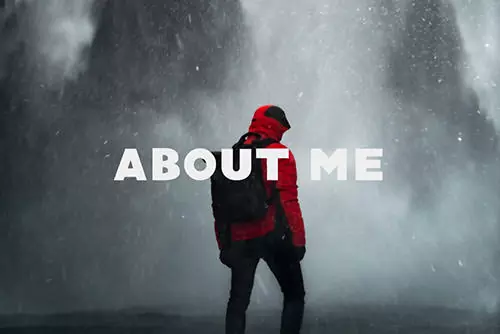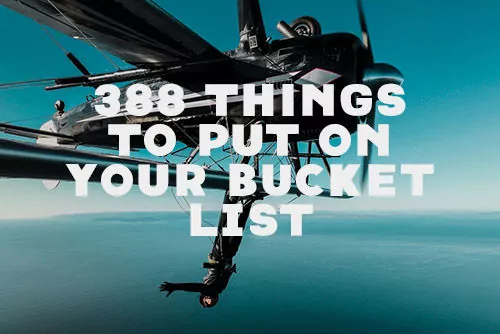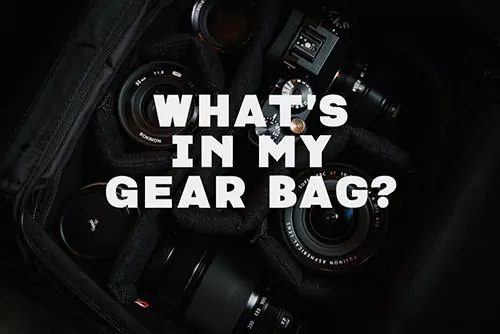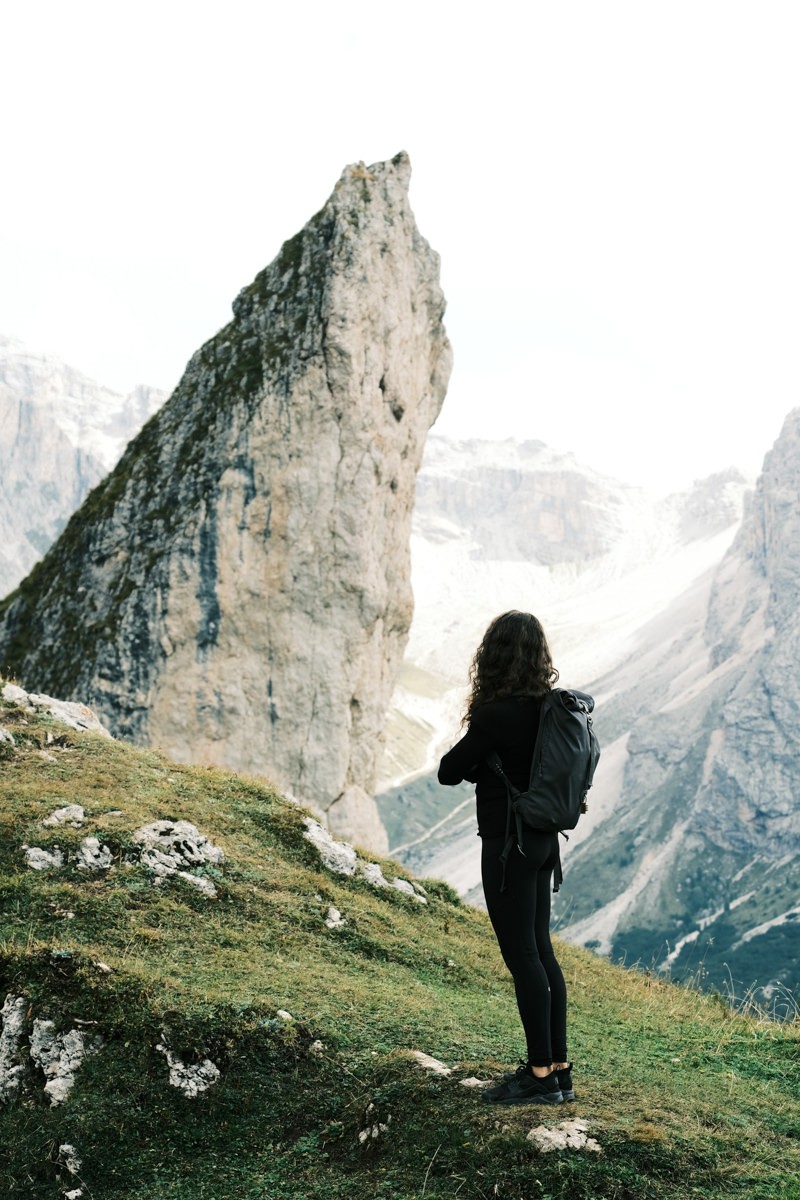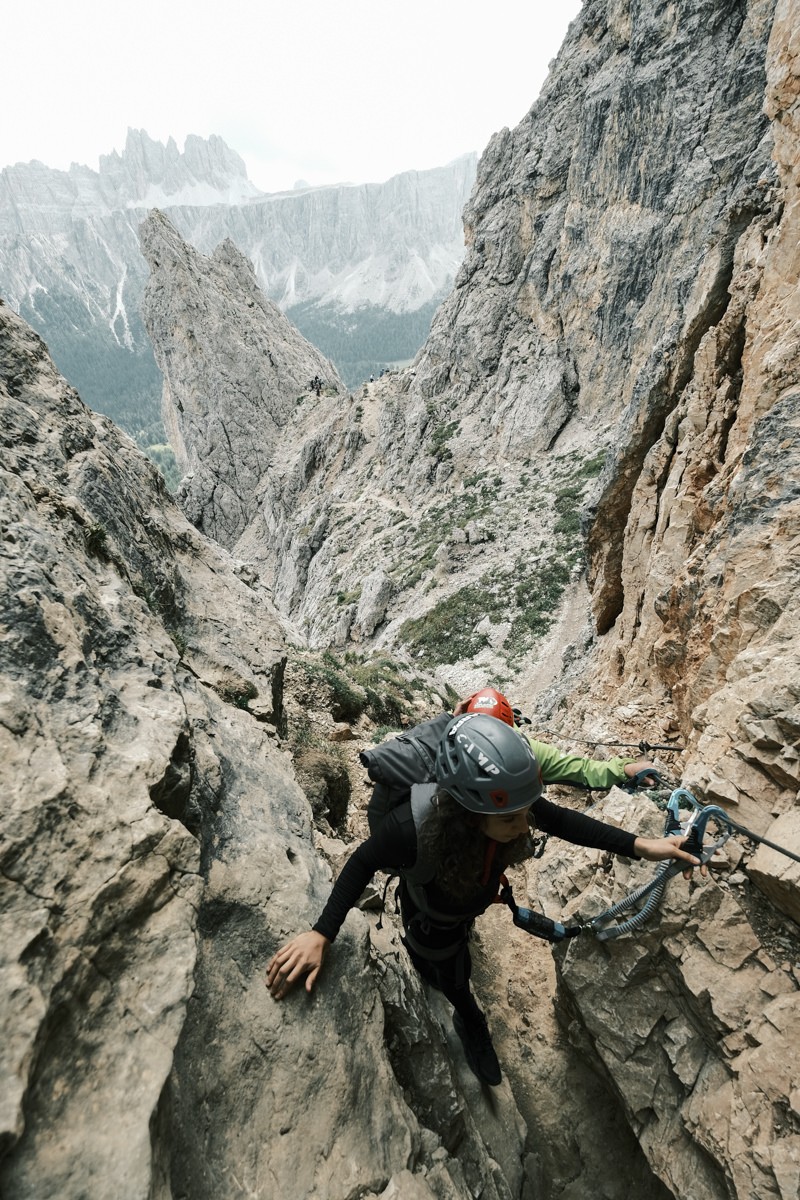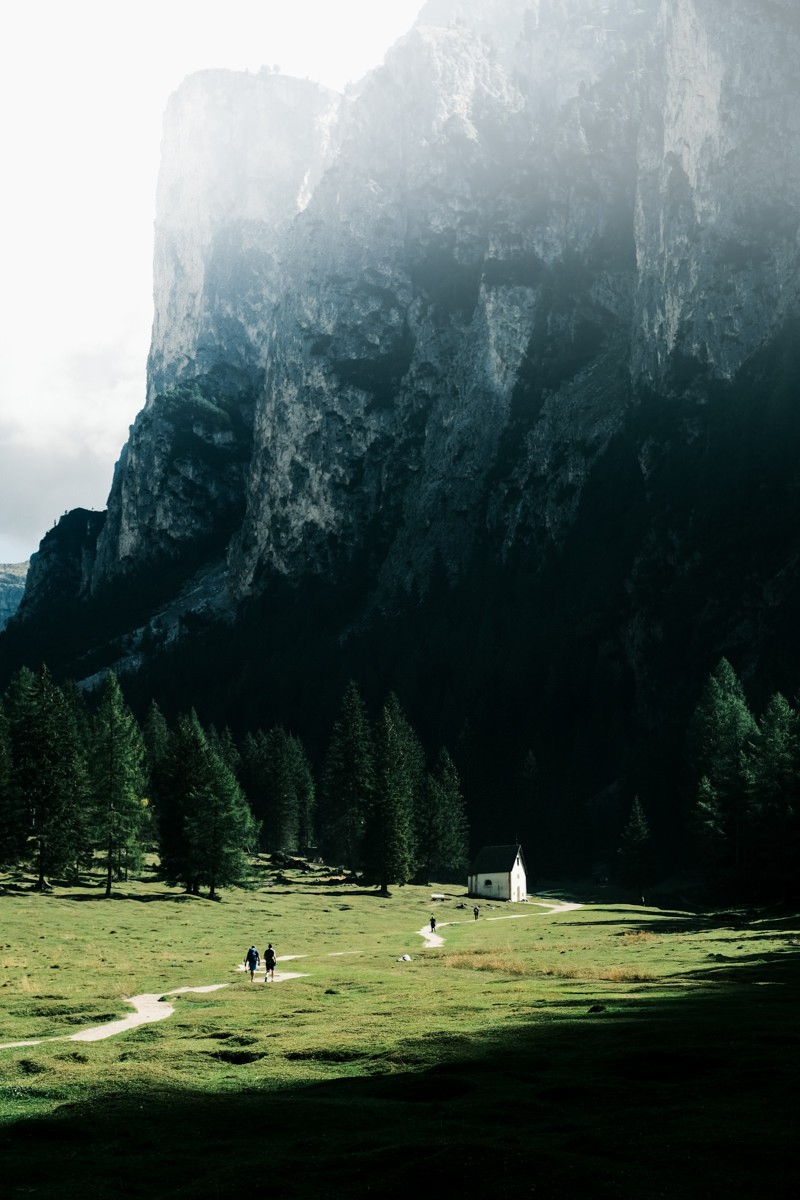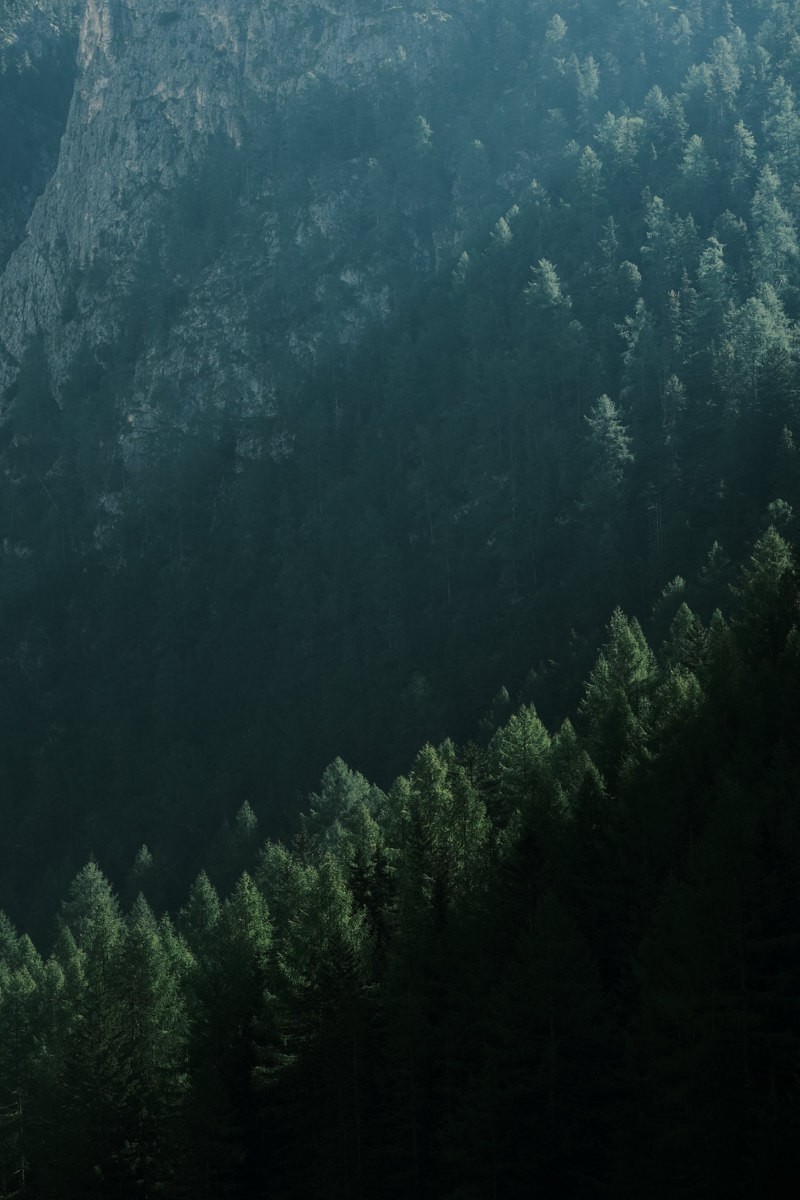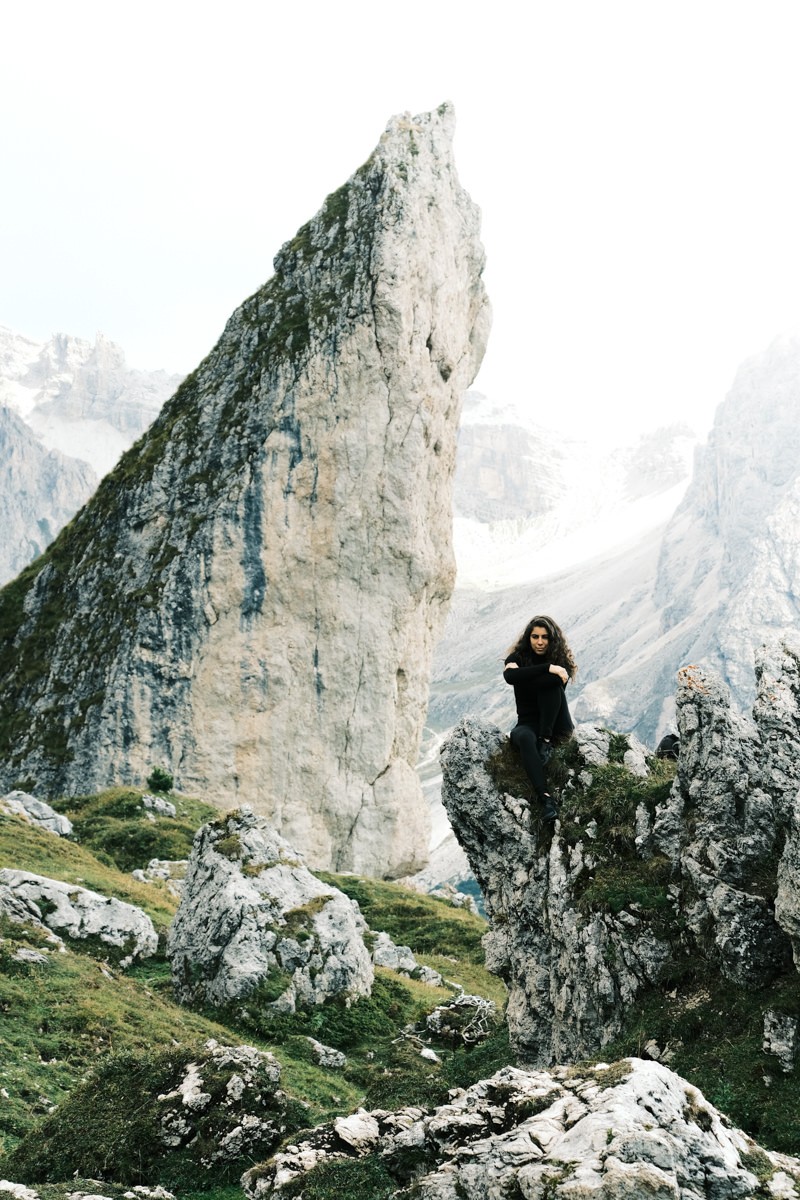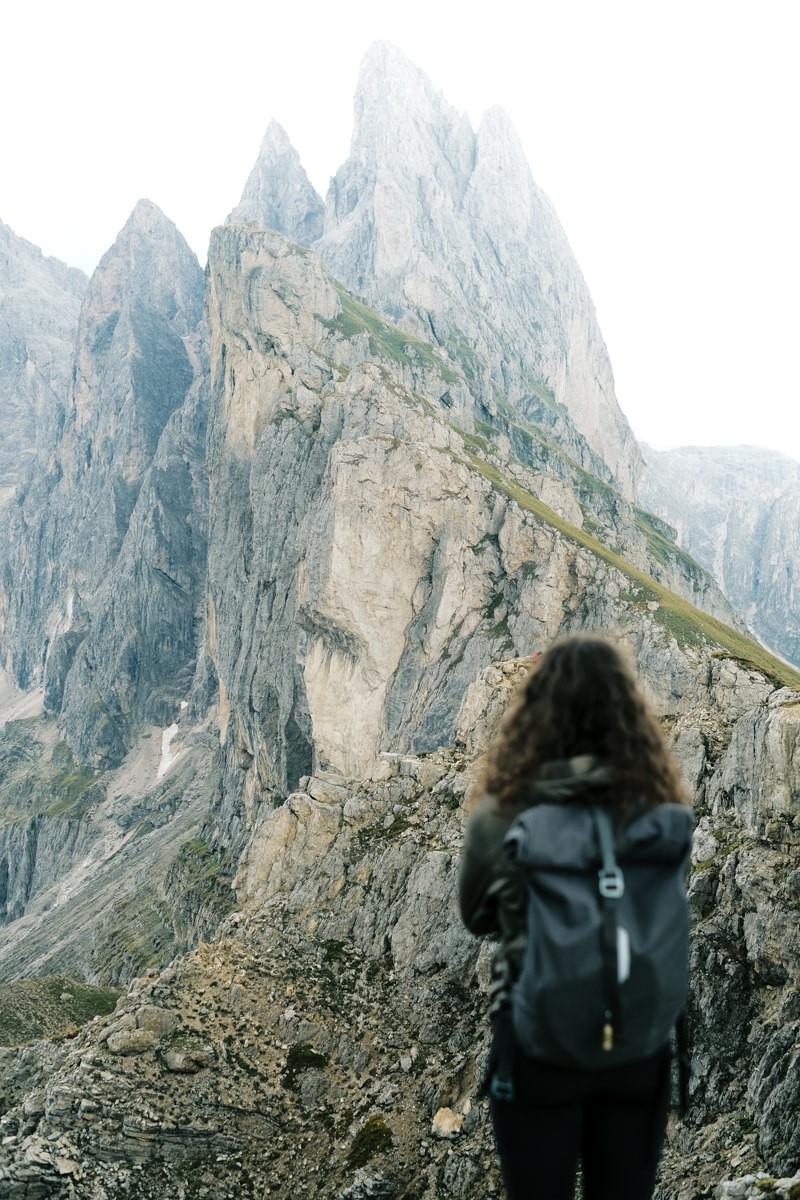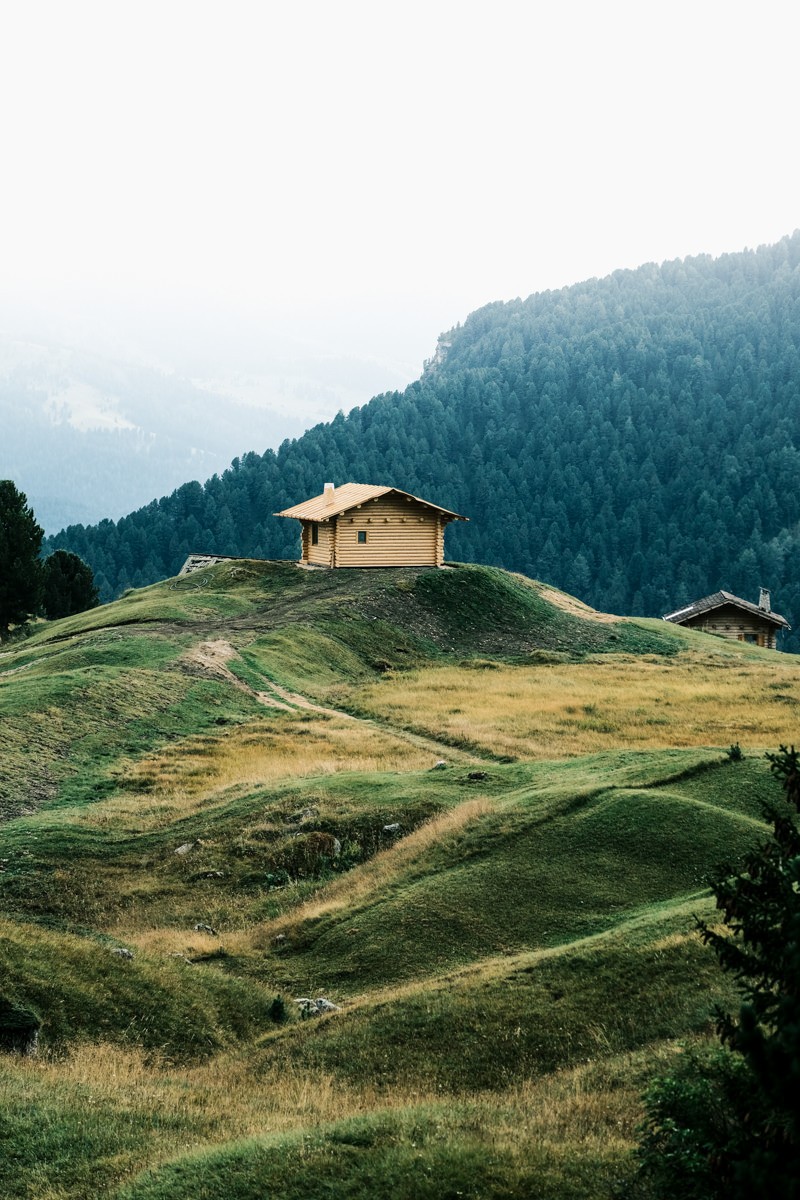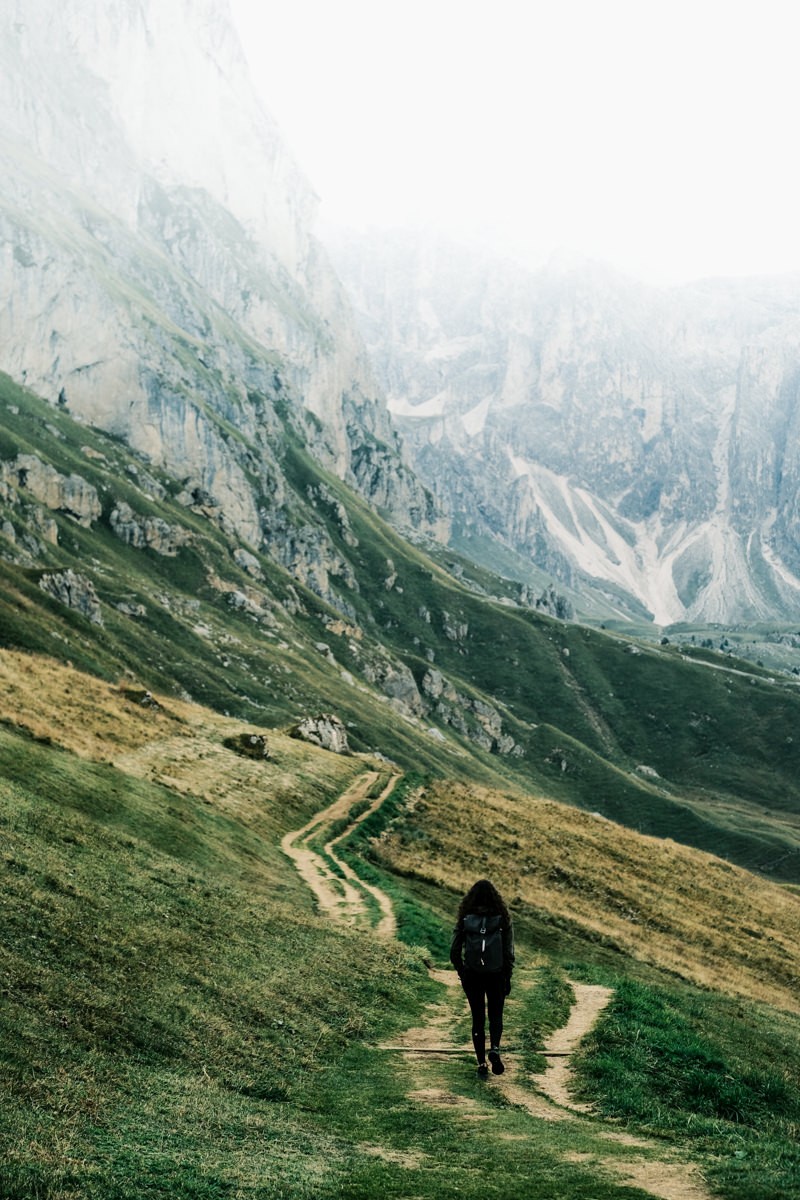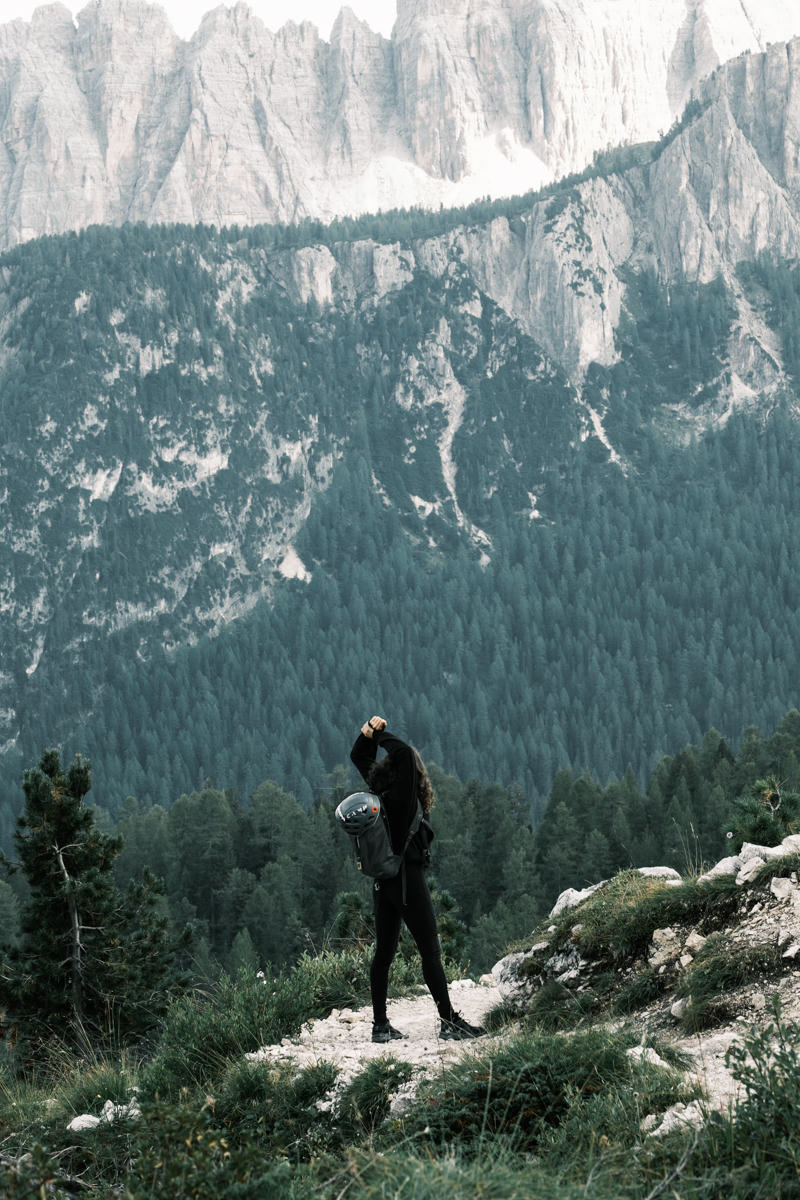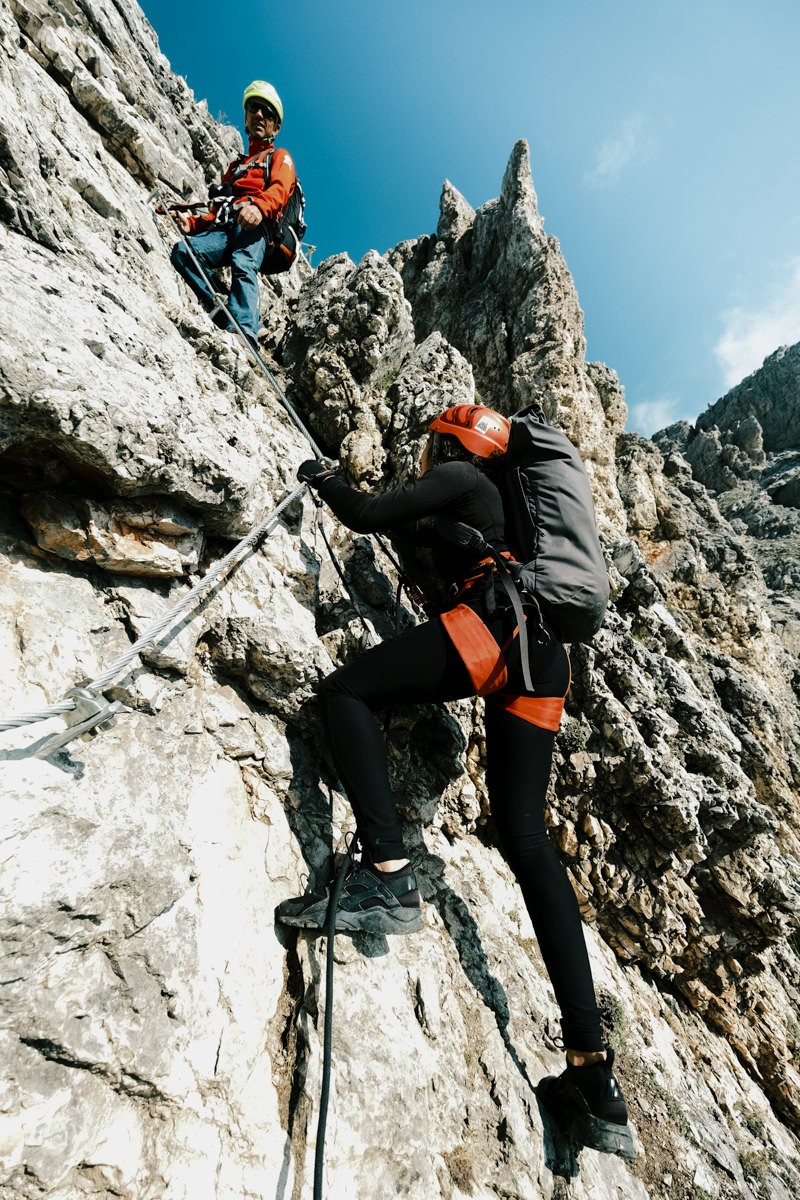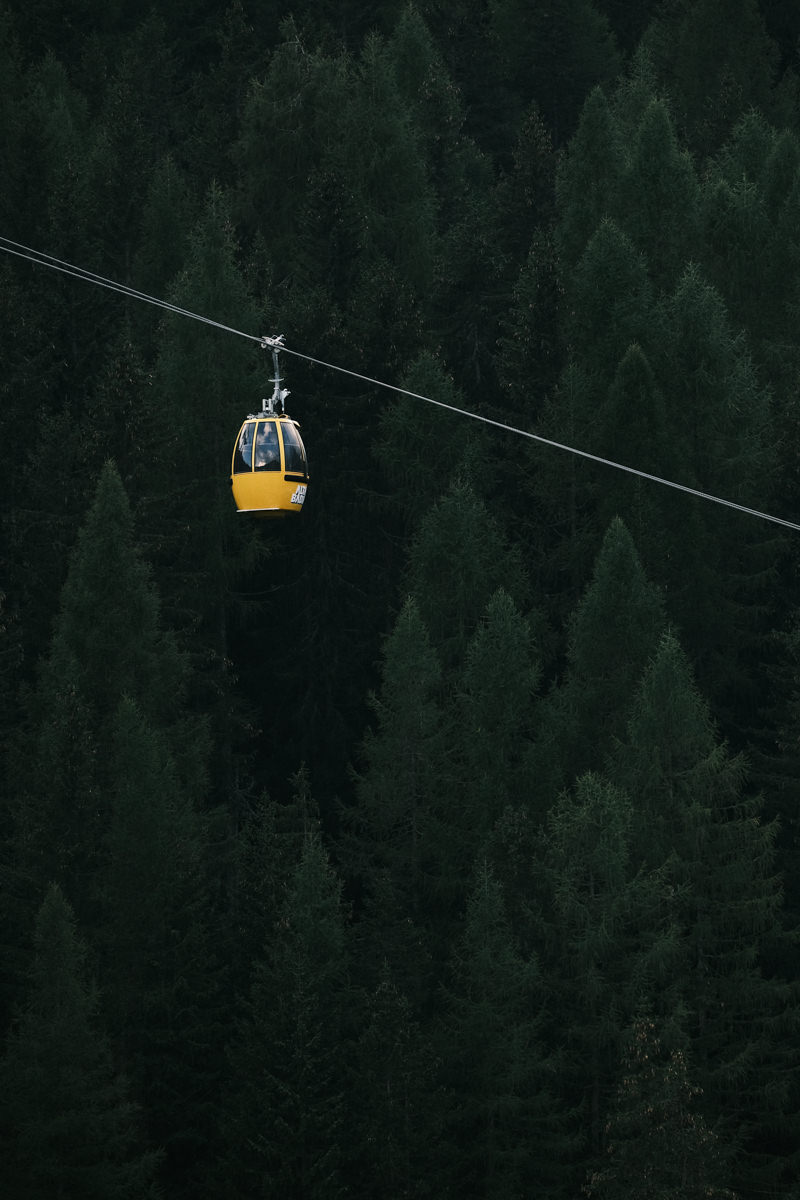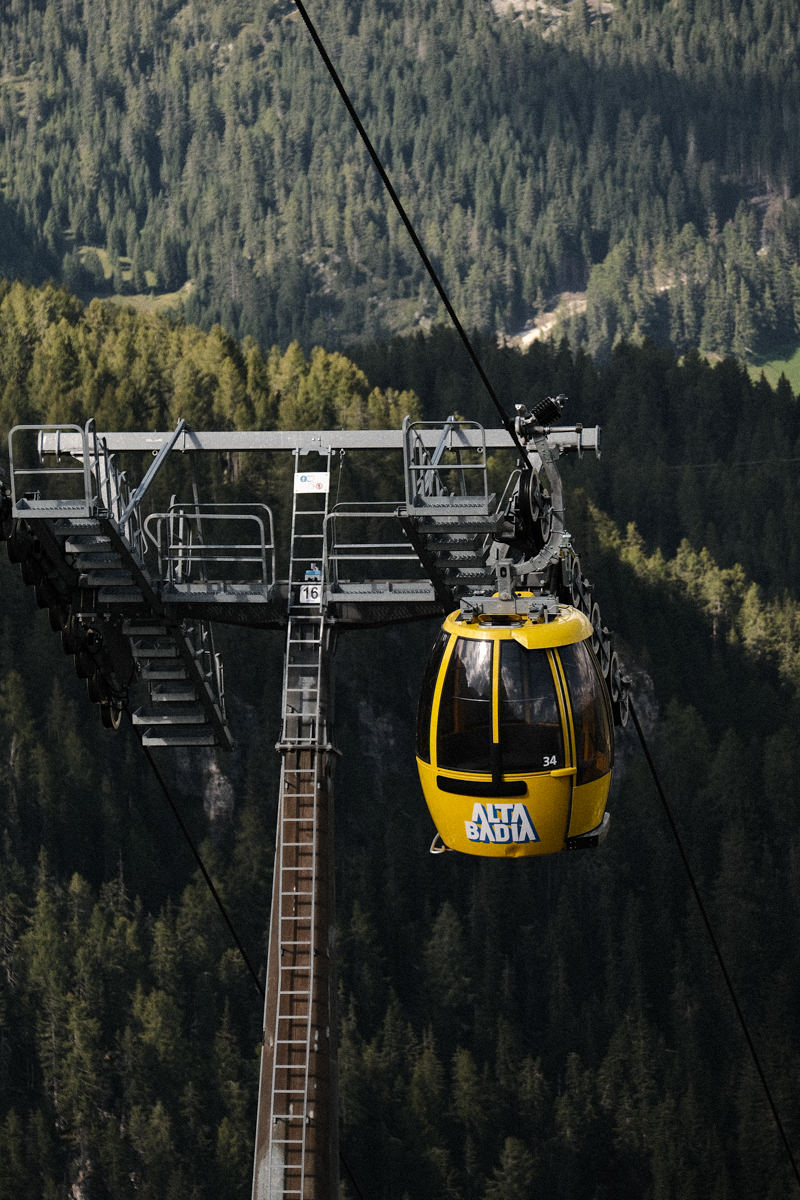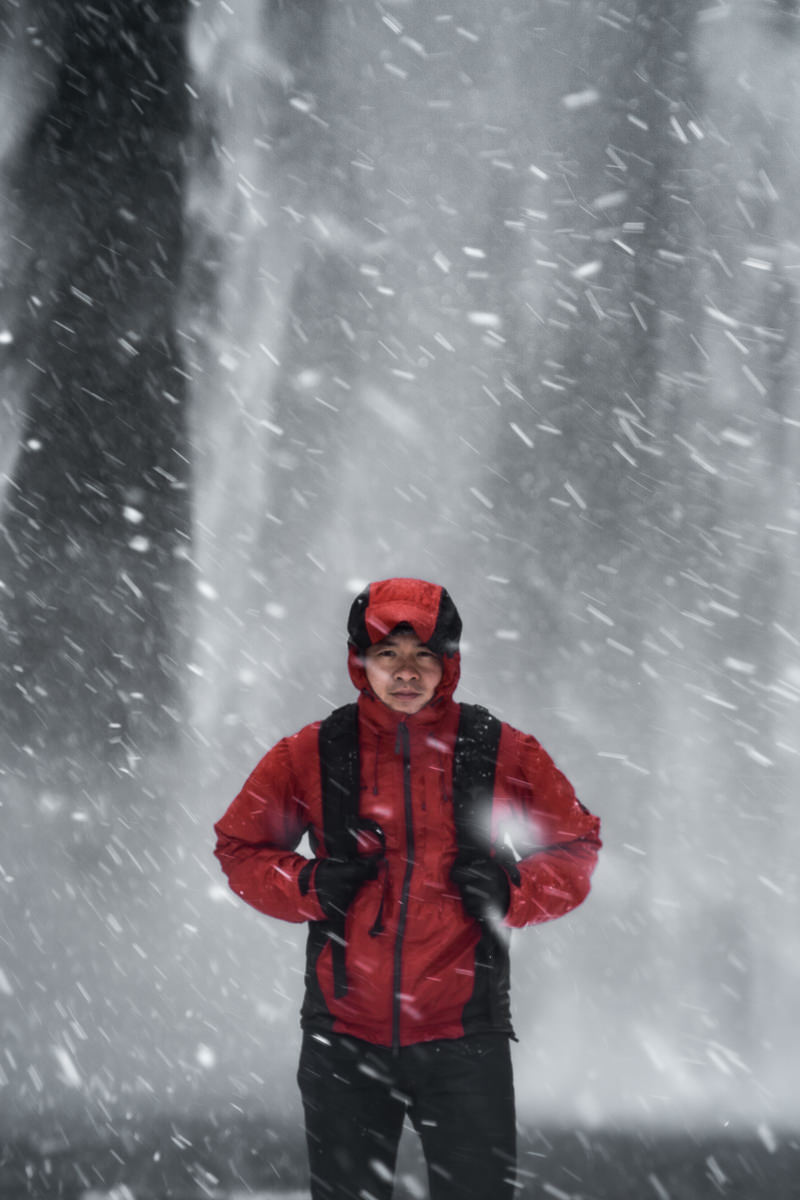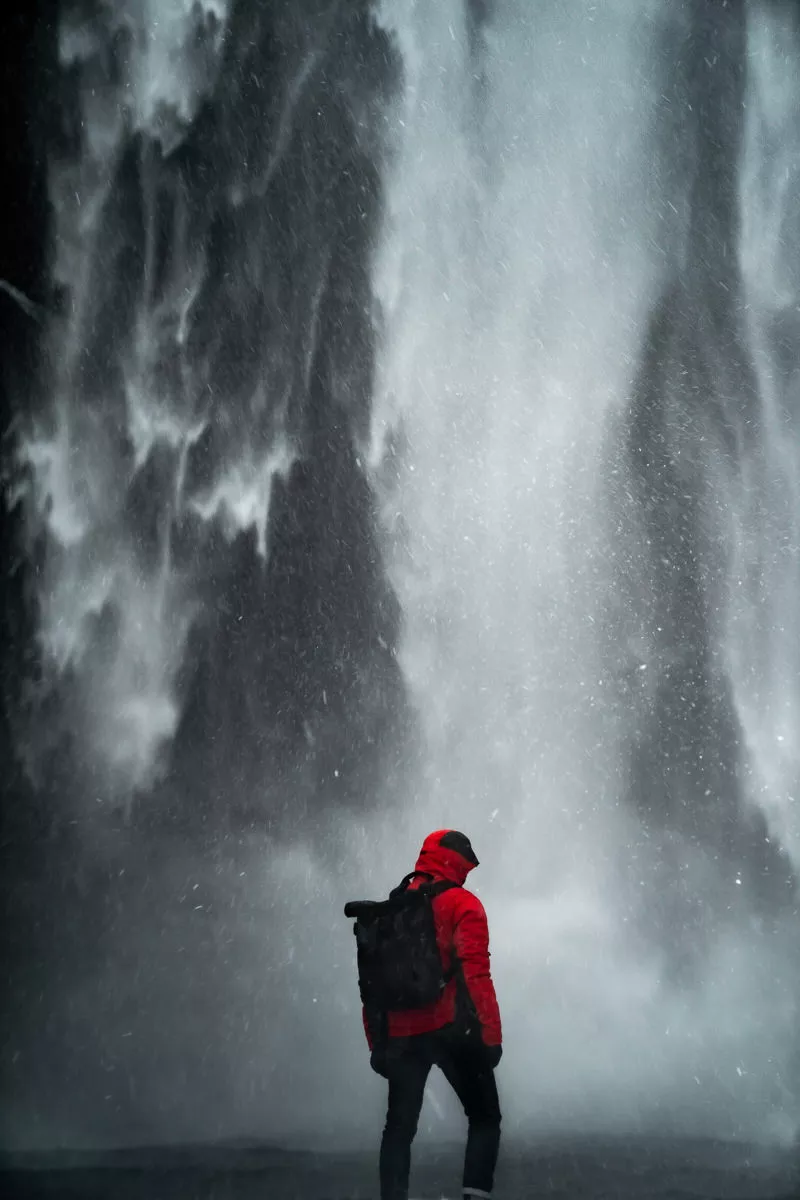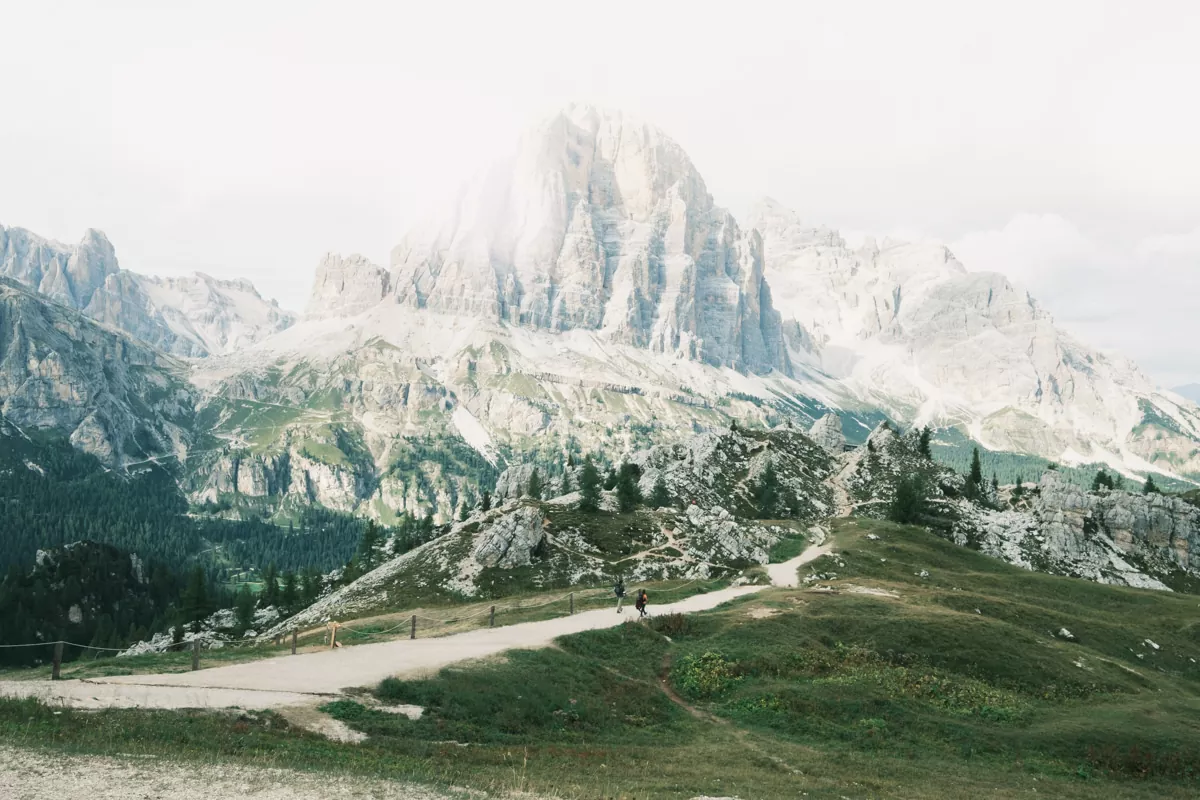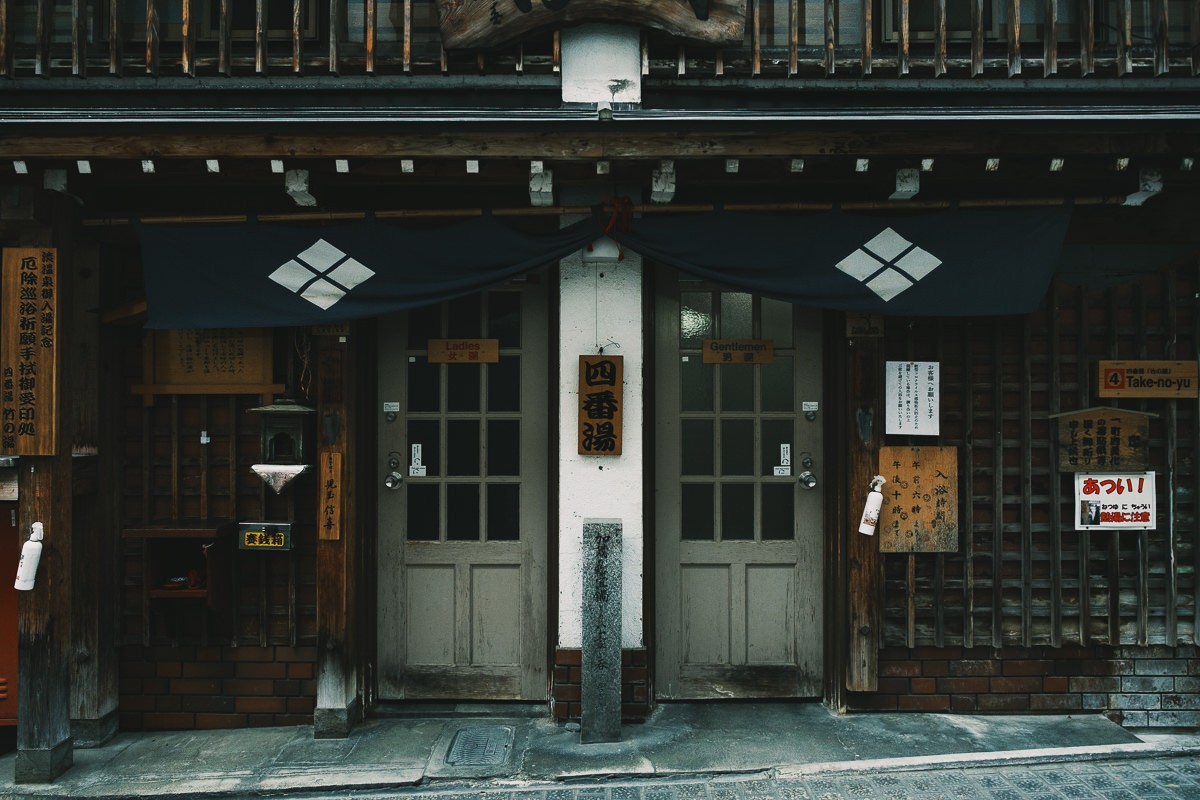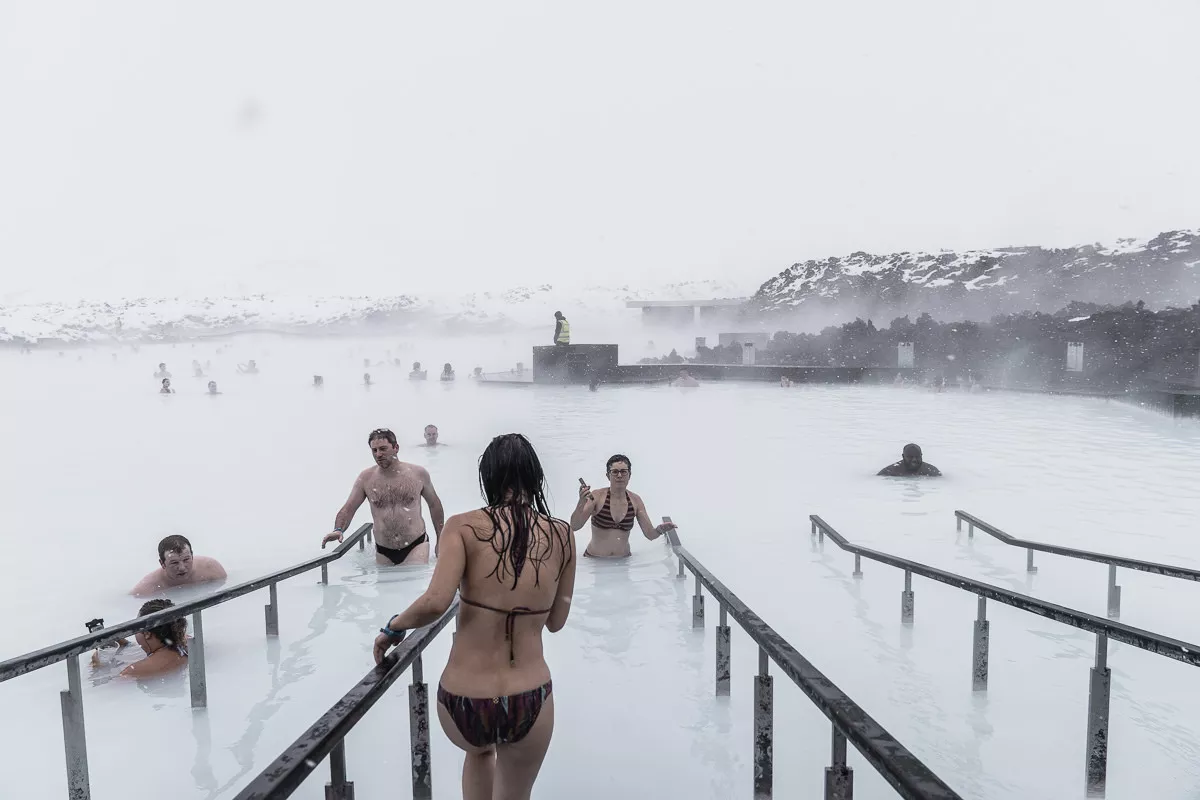Demystifying The Dolomites: A Handbook To Planning Your First Trip 2024
Demystifying The Dolomites: A Handbook To Planning Your First Trip 2024
For the longest time, I confused the Dolomites with the Annamites in Vietnam. I’ve forgiven myself because, truthfully, outside of Europe and the skiing community, most people didn’t know much about this picturesque mountain range in the Northeastern Alps of Italy – until recently. And what shame that is.
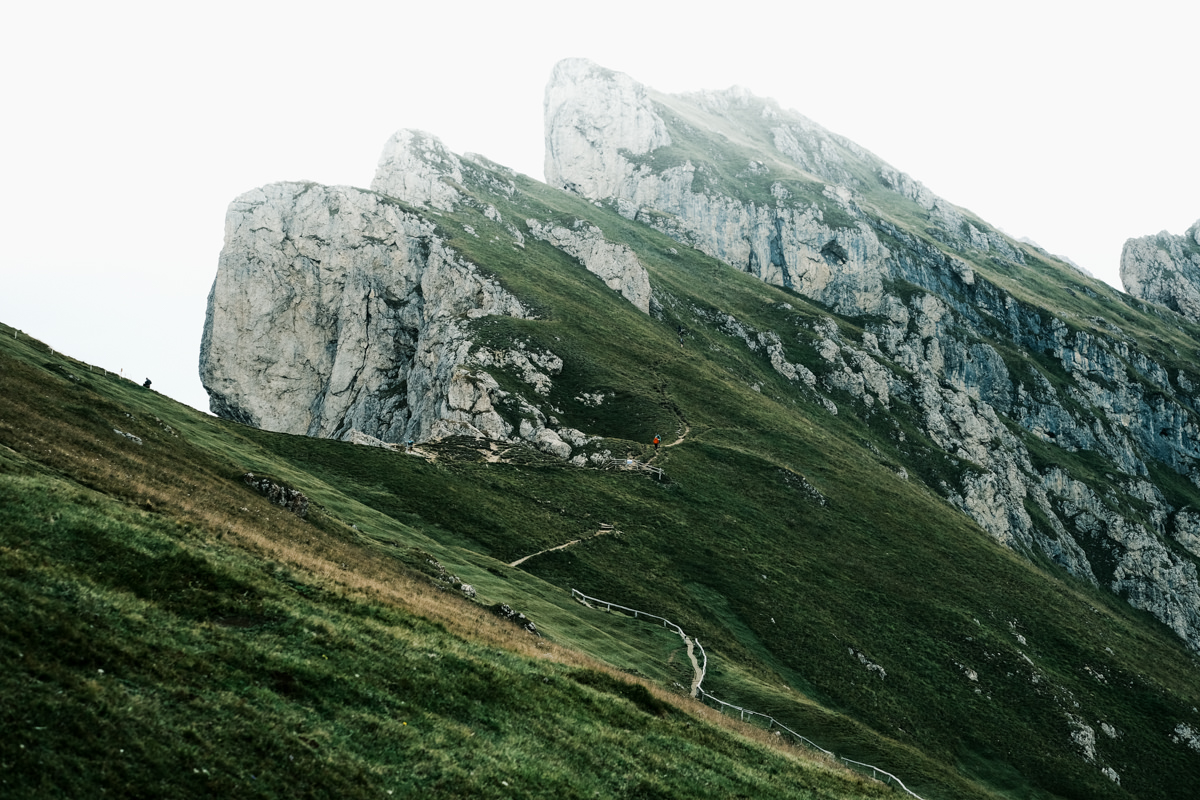
You’ve seen photos of the Dolomites, whether you know it or not. Maybe it was the ridgeline of Seceda (above), or the lone church in a the middle of a valley. (we actually chose to skip some iconic Dolomites spots after doing our research). However you came upon the Dolomites, you’re now considering a trip and I hope my experience can help making that planning easier.
This is a long read, but it’s packed a lot of useful advices to help you plan your first trip to the Dolomites.
Deciding to go was easy, but planning the trip, as I would soon learn was a lot more difficult.
The Dolomites is a massive place, divided into multiple region, and then into multiple villages within those regions – each with countless hiking trails and paths eventually connecting the entire range. Parts you can access by car, others by cable car and chair lifts, and still more only by foot.
Narrowing Down The Regions
My friend, Yasmine, and I had one week for this trip. We had been building a list of locations we wanted to visit – a long list that we quickly realized had to be cut down. I talked to the different regional tourism boards, read countless trip reports, region by region, and eventually narrowed it down to three locations on an efficient east to west route: Cortina, Alta Badia, and Val Gardena.
These three locations were ideally locally to some of the best hikes and lakes in the Dolomites. You can save and cross reference this map to help you decide where you want to go.
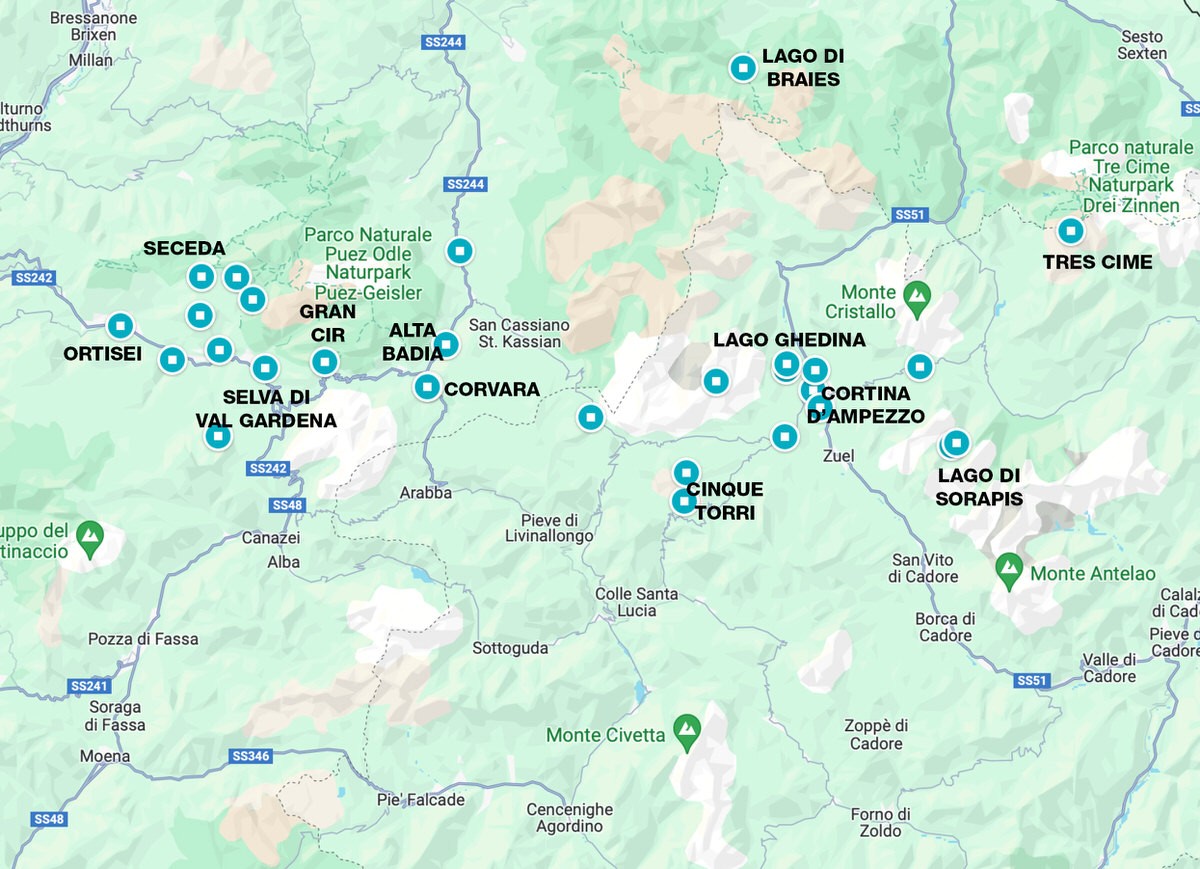
From there, I sought out the help of the tourism boards who connected us with local guides.
Our final itinerary would be one of the best trips I’ve had in a while. An enchanting and unforgettable series of hikes, stays, and experiences packed efficiently into 7 days with room to breathe and relax.
This post will focus what we learned during the planning process, our recommendations for hikes, activities, hotels, and food, and things you should definitely know and bring before going to the Dolomites.
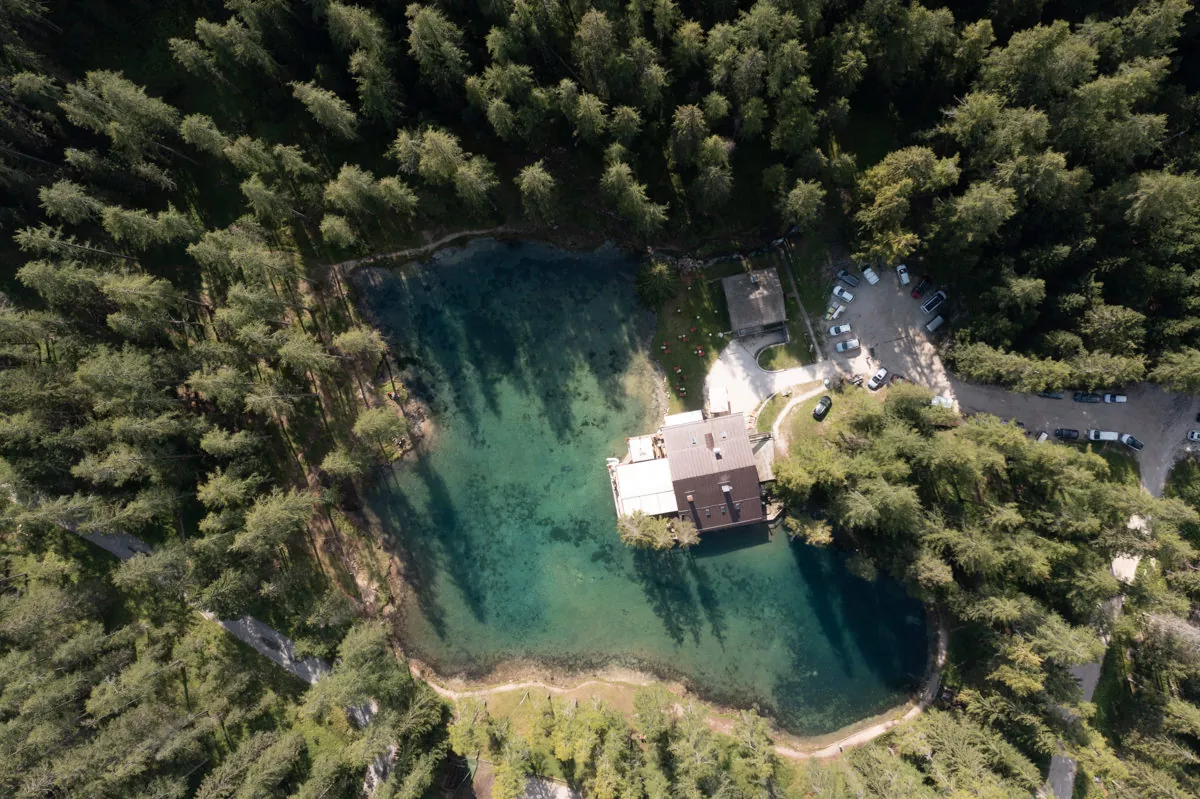
Guide To The Dolomites Quick Jump Menu
2. Highlights Of The Dolomites
4. How To Get To The Dolomites
5. Skipping Tre Cime, Lago Di Braies, And Santa Magdalena Church
7. Should You Get The Dolomiti Superski Pass
8. Cheap Accommodations In The Dolomites
9. Where We Stayed On Our Road Trip
10. Best Hotel Recommendations
11. Choosing When To Go To The Dolomites
12 What Languages Are Spoken In The Dolomites
13. What To Pack For The Dolomites
Our 7 Day Dolomites Itinerary
Below is our rough itinerary. I offered the same recommendations to a few travelers planning their trip and they gave resoundingly positive confirmations afterwards. Use it as a full itinerary for your own trip or take some of my recommendations and add it to your own. Click on the links to jump directly to the section where we discuss each of the hikes and recommendations.
Bear in mind that we went during the fall, when the days were shorter. In the summer, you’d likely be able to do longer hikes, if your legs are up for it. I’ll get to that.
Day 1: Arrive To Cortina d’Ampezzo
Arrive to Marco Polo International Airport (Venice). Rent a car and drive 2.5 hours to Cortina d’Ampezzo. Stay at B&B Hotel Pass Tre Croci Cortina.
Day 2: Cortina
Breakfast at hotel. Hike to Cinque Torri and Via Ferrata to Rifugio Nuvolau. Lunch at Rifugio Scoiattoli. Dinner in Cortina d’Ampezzo.
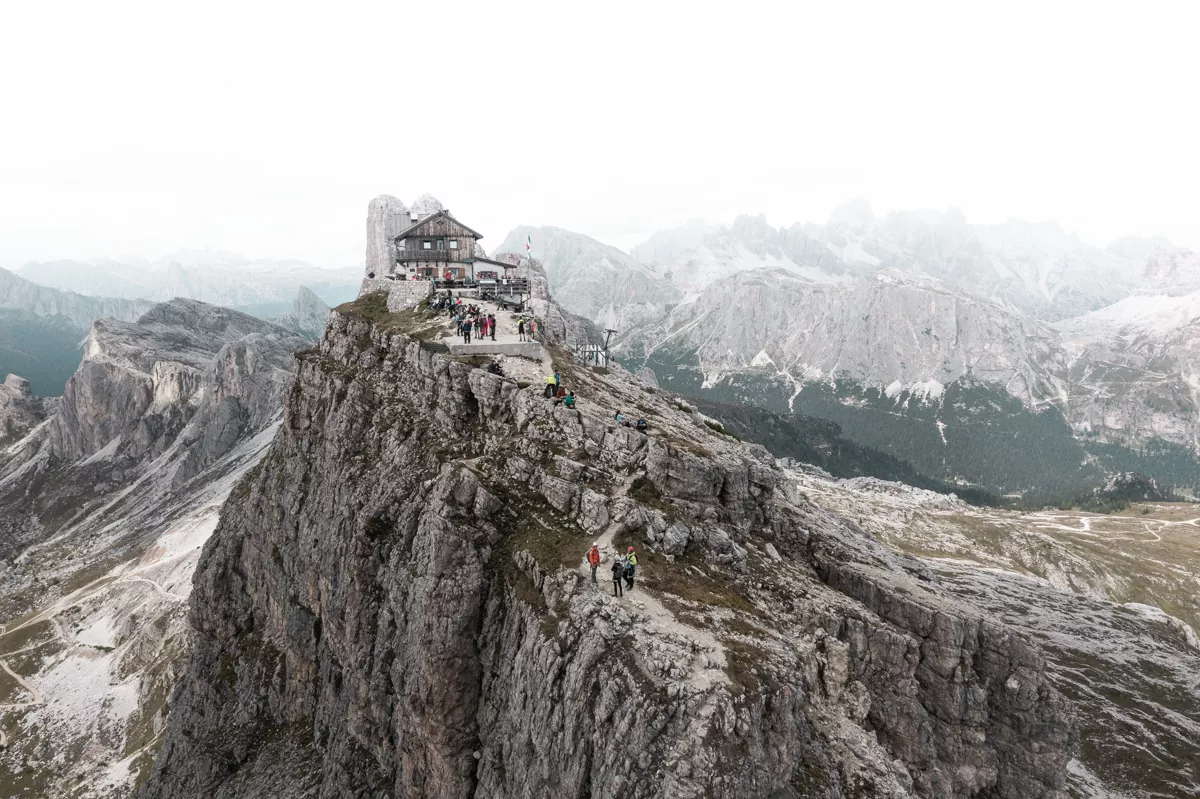
Day 3: Cortina
Sunrise hike to Lago di Sorapis. Breakfast at Hotel. Gondola to Tofana di Mezzo. Hike and lunch at Lago Di Ghedina. Explore the town of Cortina d’Ampezzo. Drive to Corvara. Stay at Hotel Marmolada. Dinner at hotel.
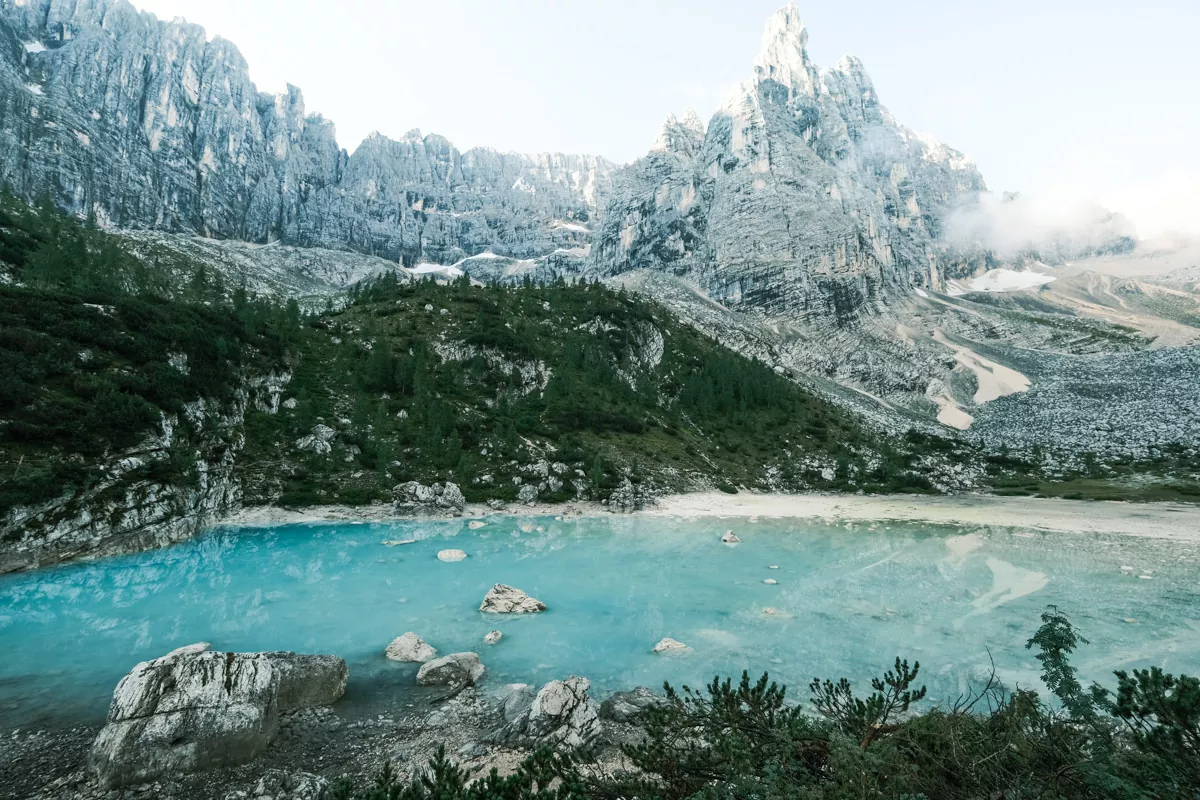
Day 4: Alta Badia
Breakfast at hotel. Via Ferrata To Piccola Cir. Lunch at Rifugio Jimmi Hutte. Explore Corvara. Drinks at Berghotel Ladinia. Spa and Dinner at Hotel Marmolada. Read my full review of this amazing hotel.
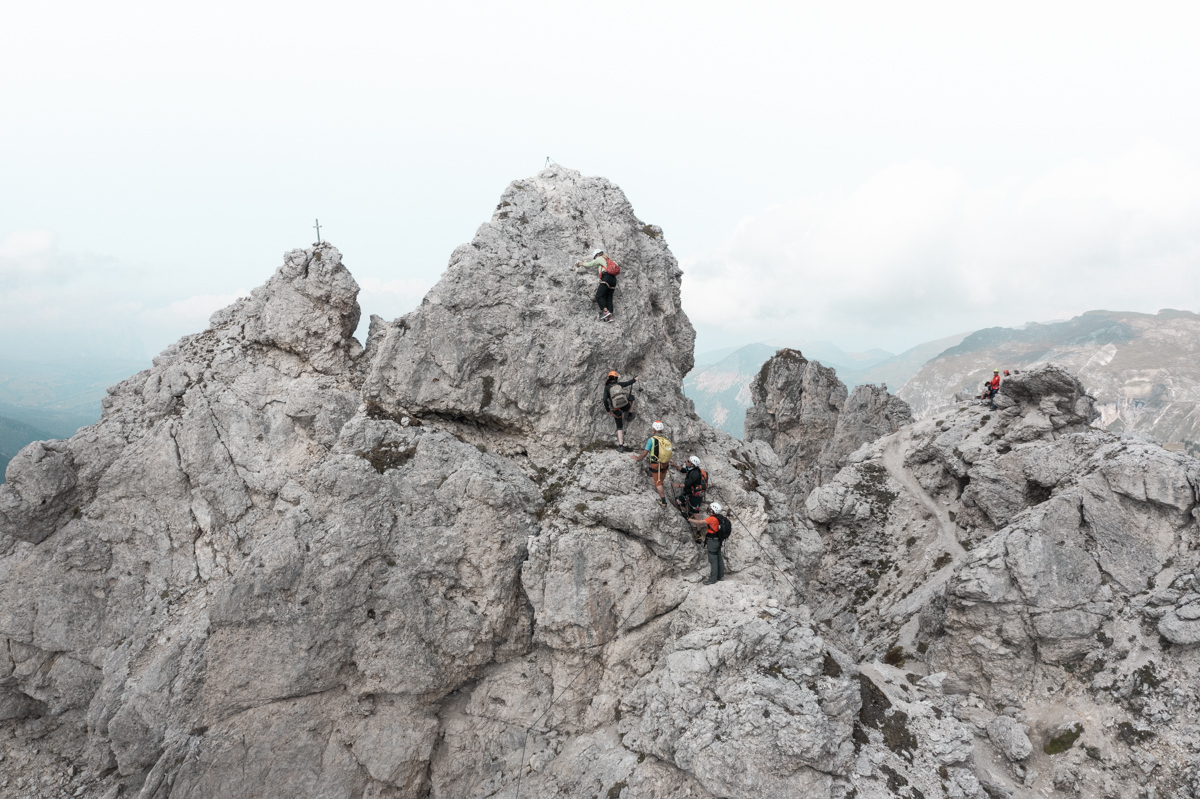
Day 5: Alta Badia
Breakfast at hotel. Spa at Hotel Marmolada. Hike to La Crusc. Hike to Gardenacia. Late lunch at top of Col Alta. Drive to Val Gardena. Spa and stay at Hotel Continental. Dinner in Val Gardena.
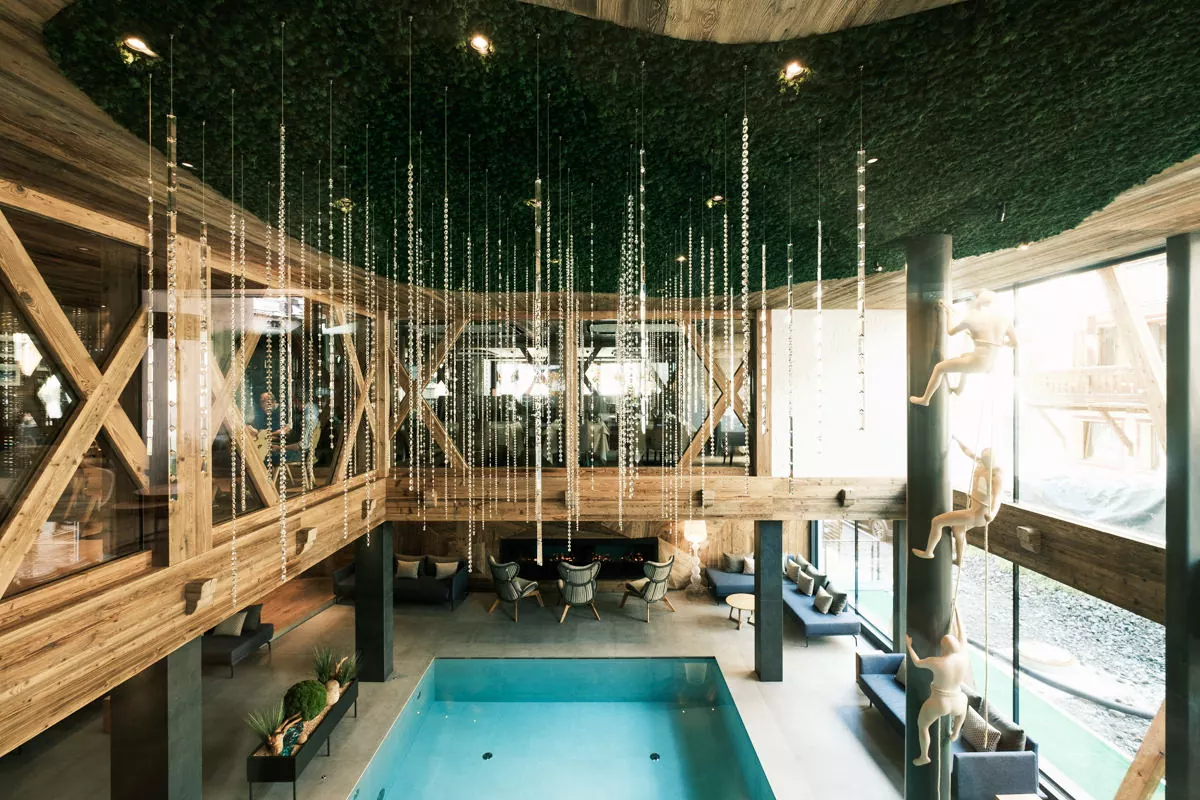
Day 6: Val Gardena
Cable car lift to Col Raiser. Brunch at Malga Pieralongia Alm. Hike to Seceda. Picnic at Seceda Ridge. Hike down to Val Gardena. Spa at Hotel Continental. Dinner in Val Gardena.

Day 7: Val Gardena And Departure
Hike To Vallunga Langental. Lunch in Ortisei. Drive To Venice via Bolzano and Verona.
While our itinerary might look a little light to some, I assure you that our days were filled. Our legs were completely sore by the end of the week.
The most important advice it to give yourself extra time for everything. We enjoyed having enough time to take breaks, enough time for longer lunches at rifugios, and enough time to soak in the spa and sauna at the end of most days,
Highlights and Recommendations From Our Trip
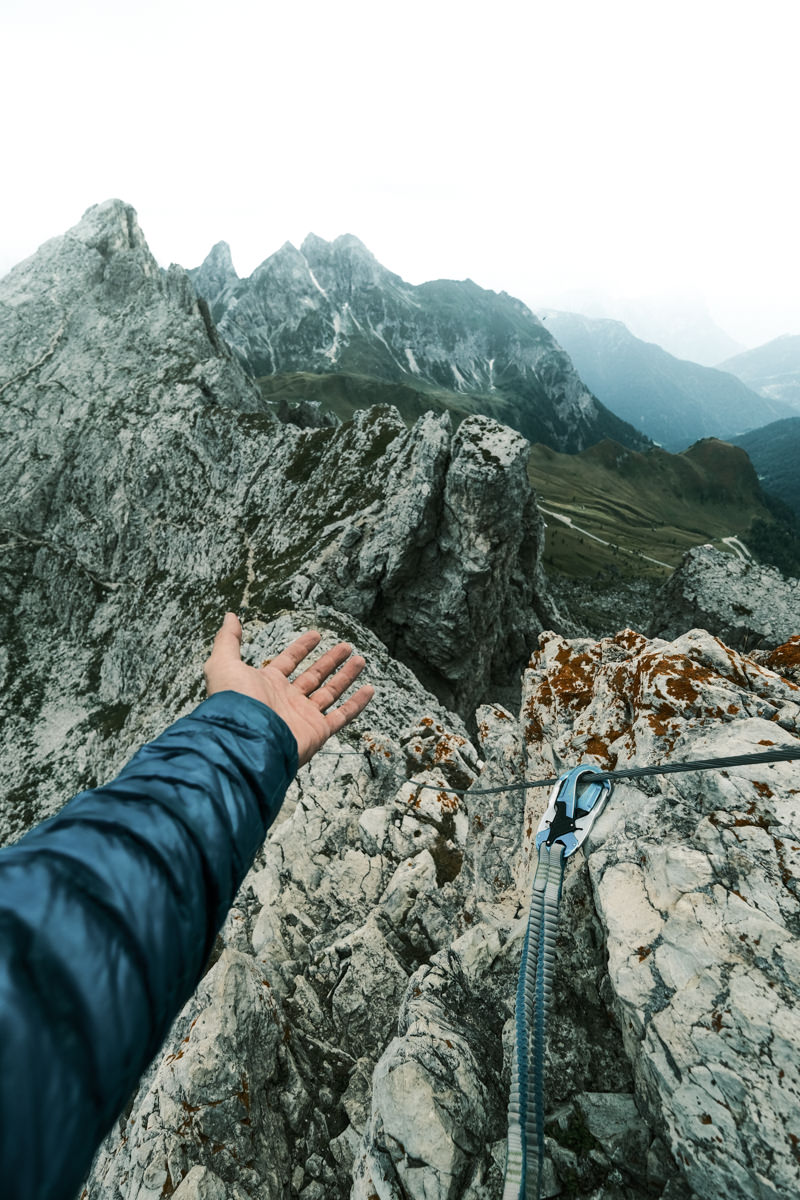
Via Ferrata To Rifugio Nuvolau: Easy Via Ferrata that anyone can do with spectacular views throughout and when you reach the top at Rifugio Nuvolau.
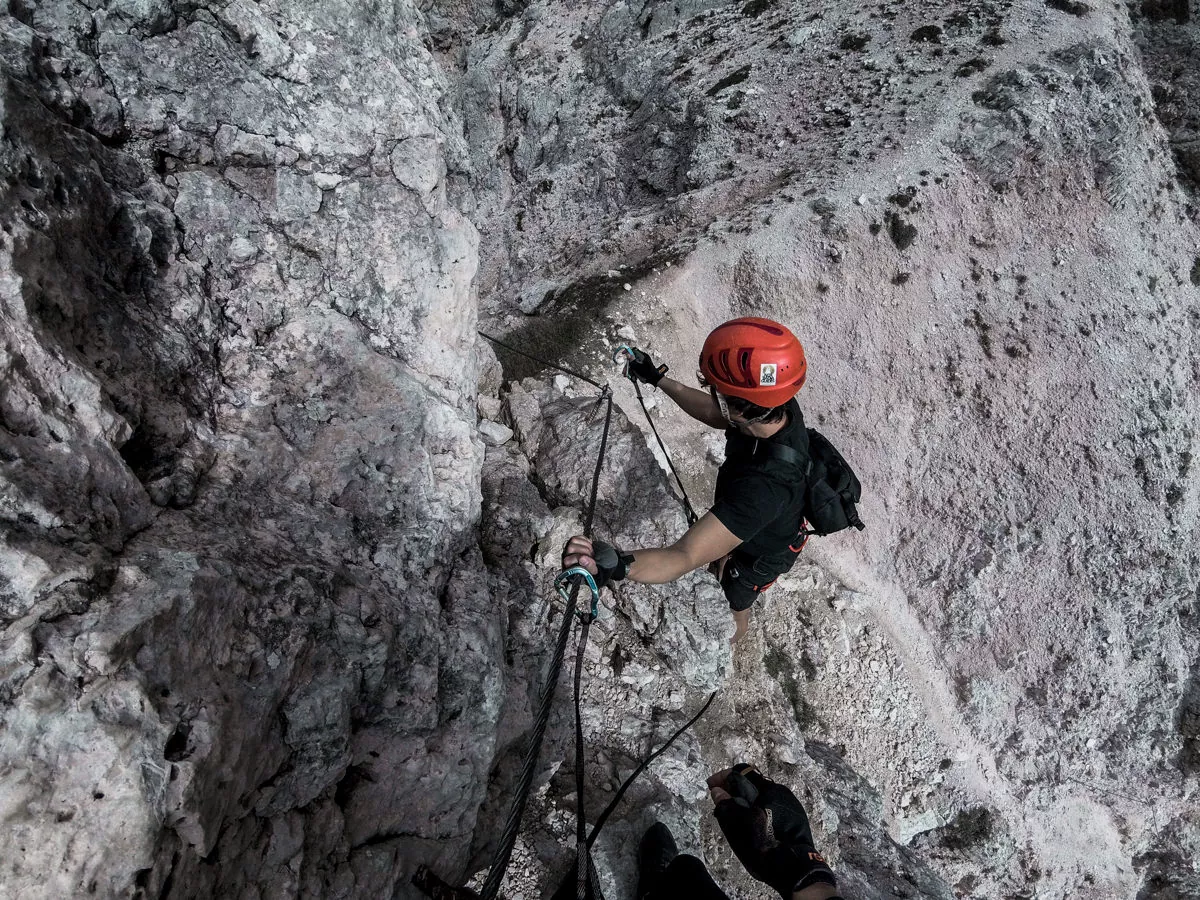
Via Ferrata To Piccola Cir: An adventurous climb with some near vertical section and a rewarding summit. I could not help, but turn around to take in the view, even while I was balancing off the side of the cliff.
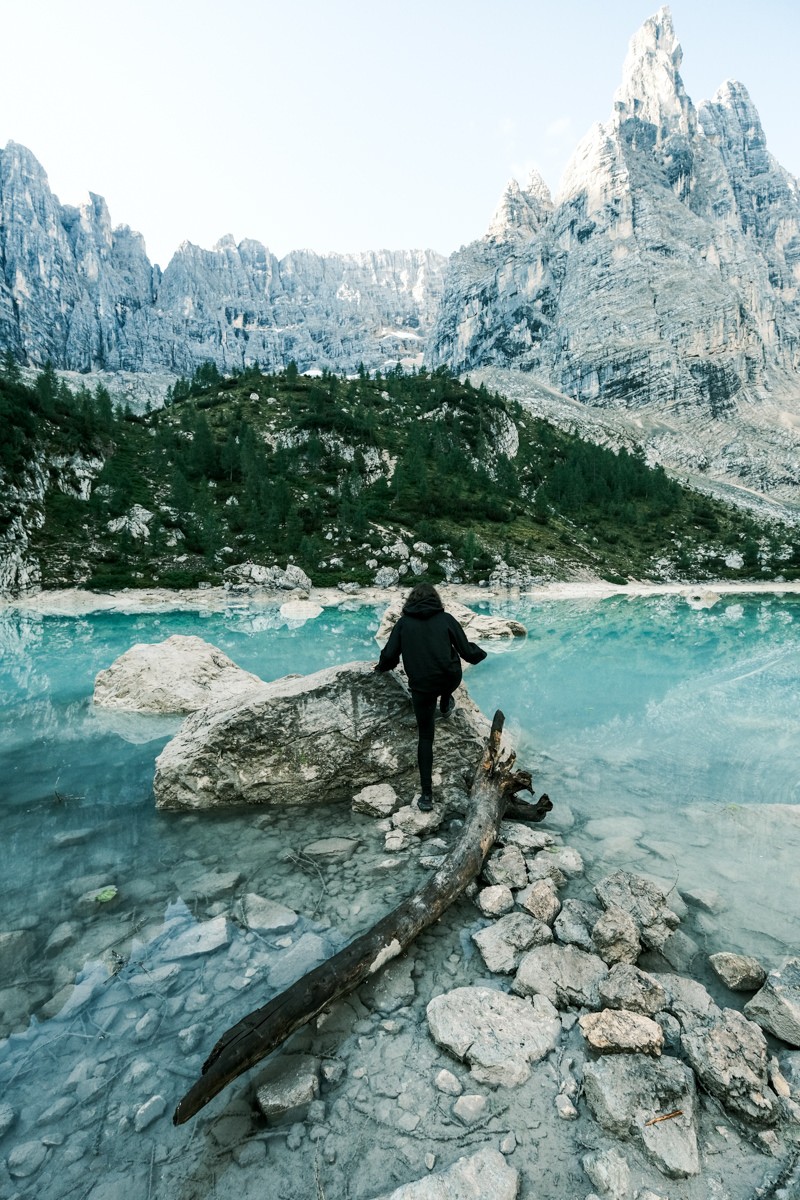
Sunrise Hike To Lago di Sorapis: A beautiful blue lake high in the mountains. The hike is a steady climb all the way up and you keep wondering how a lake could possibly be at the end of your journey. We enjoyed it for the fact that we had the hike to ourselves and only a few other people were at the lake when we arrived early in the morning.
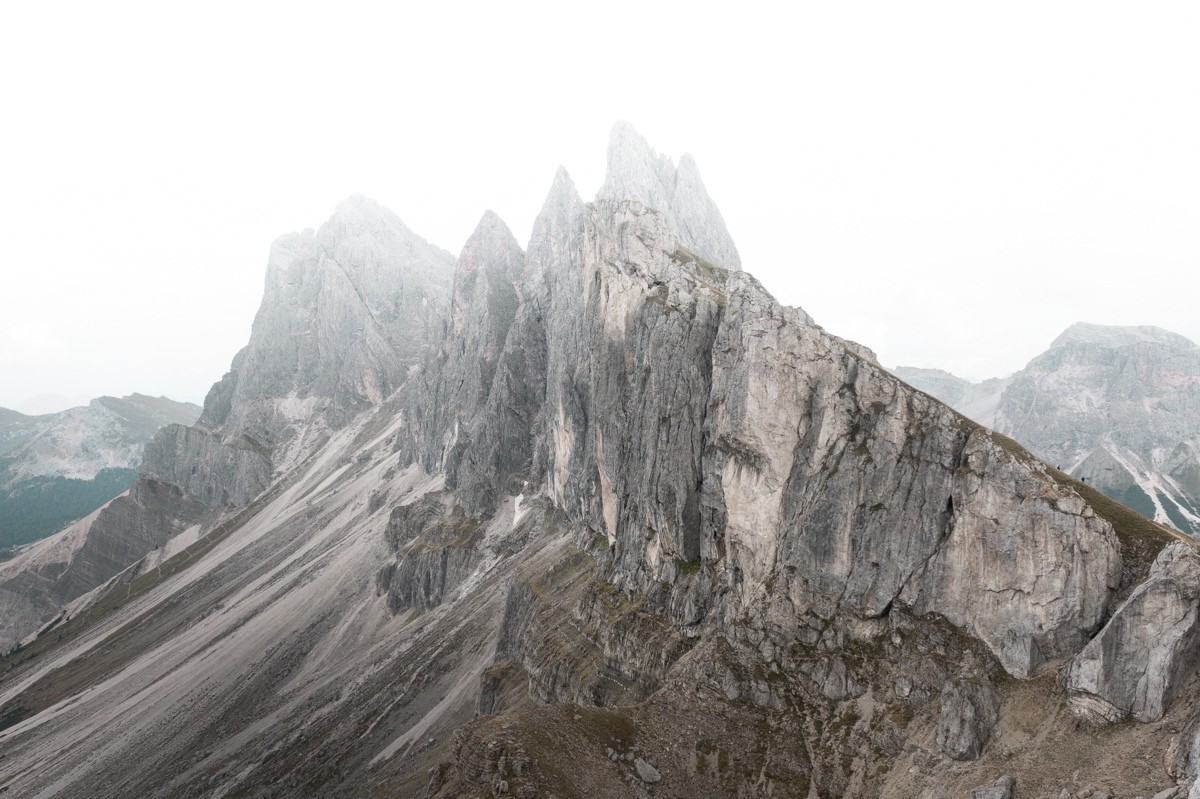
Hike To Seceda: Our favorite hike of the trip. I’m not exaggerating when I say that the landscape was just unbelievable from start to finish. And it got even better when you reached the Seceda Ridgeline.
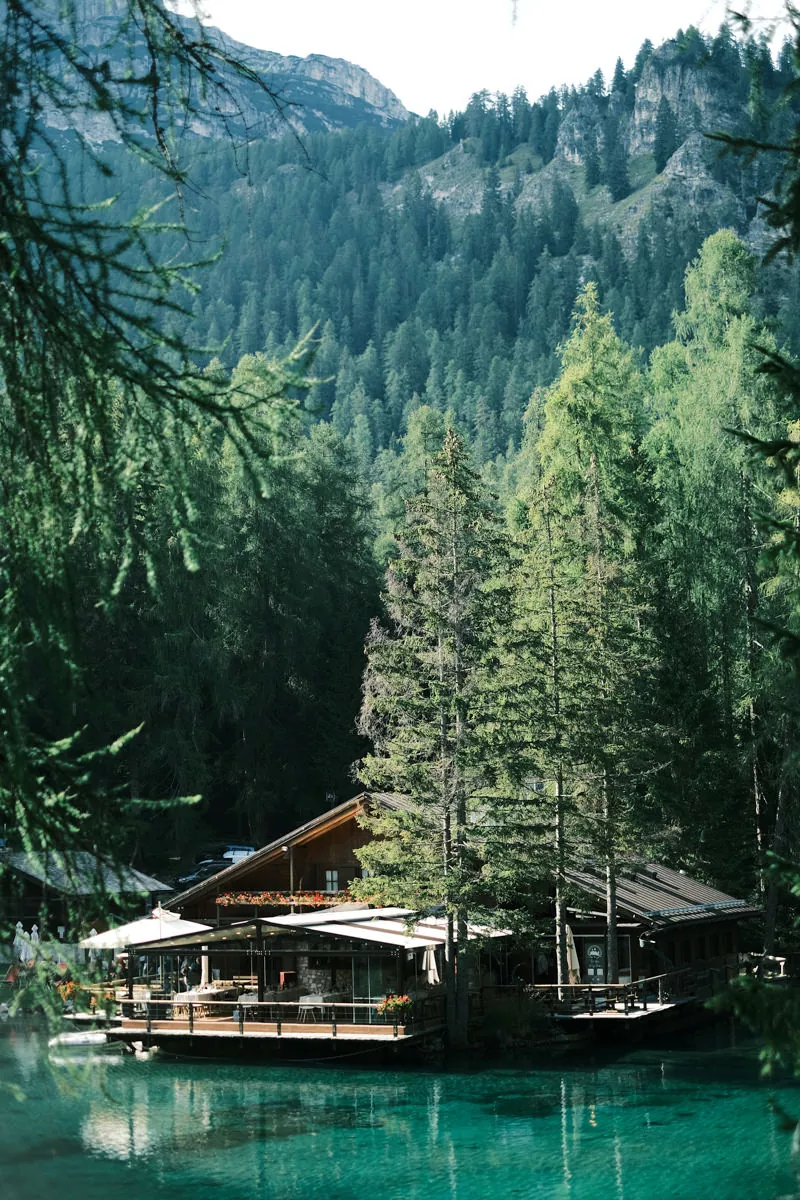
Lunch at Lago Ghedina: This was my favorite lunch spot of the week. We hiked there after coming down from Tofana di Mezzo. The restaurant sits over a lake. You can’t get fish any fresher as the trout comes right from that same lake. It was so nice to sit with a Hugo Spritz on a beach chair to take in the sun.
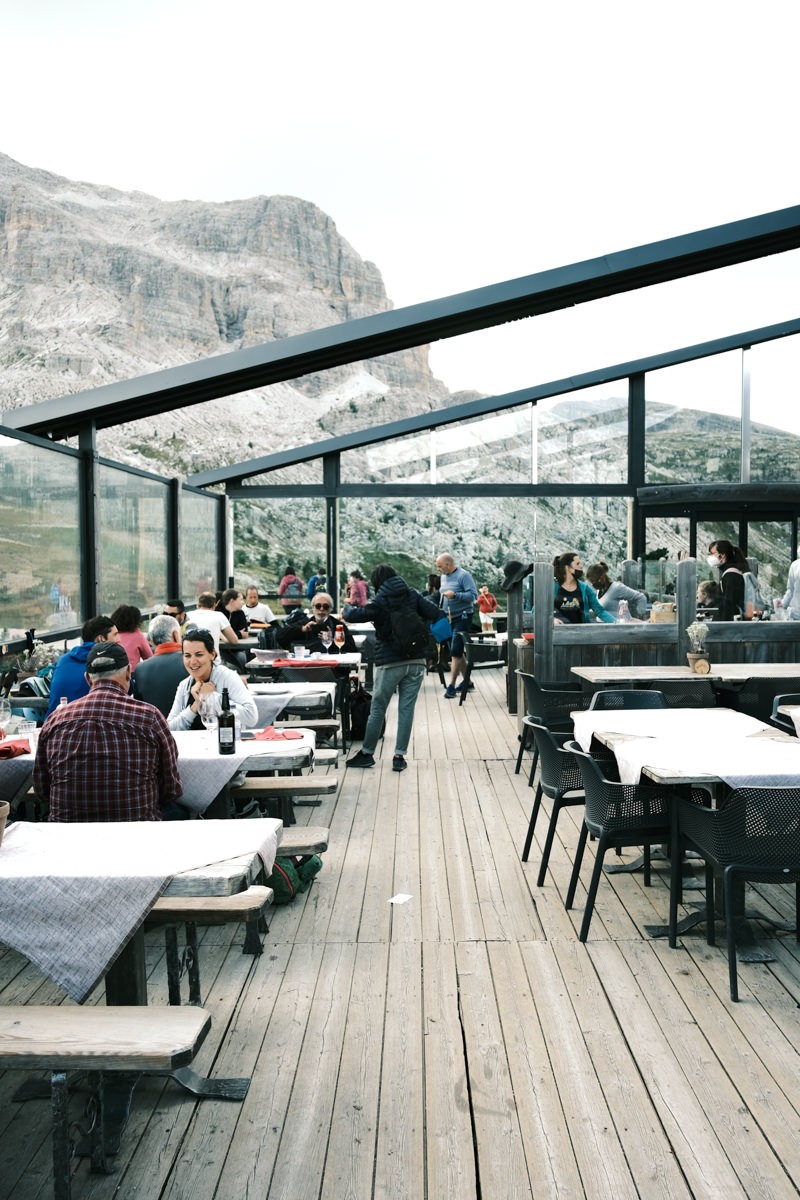
Lunch at Rifugio Scoiatolli: Another spectacular lunch spot after our climb down from Rifugio Nuvolau. There are views all around including the backdrop of Cinque Torri. The food was delicious and you have to try some of the local cuisine.
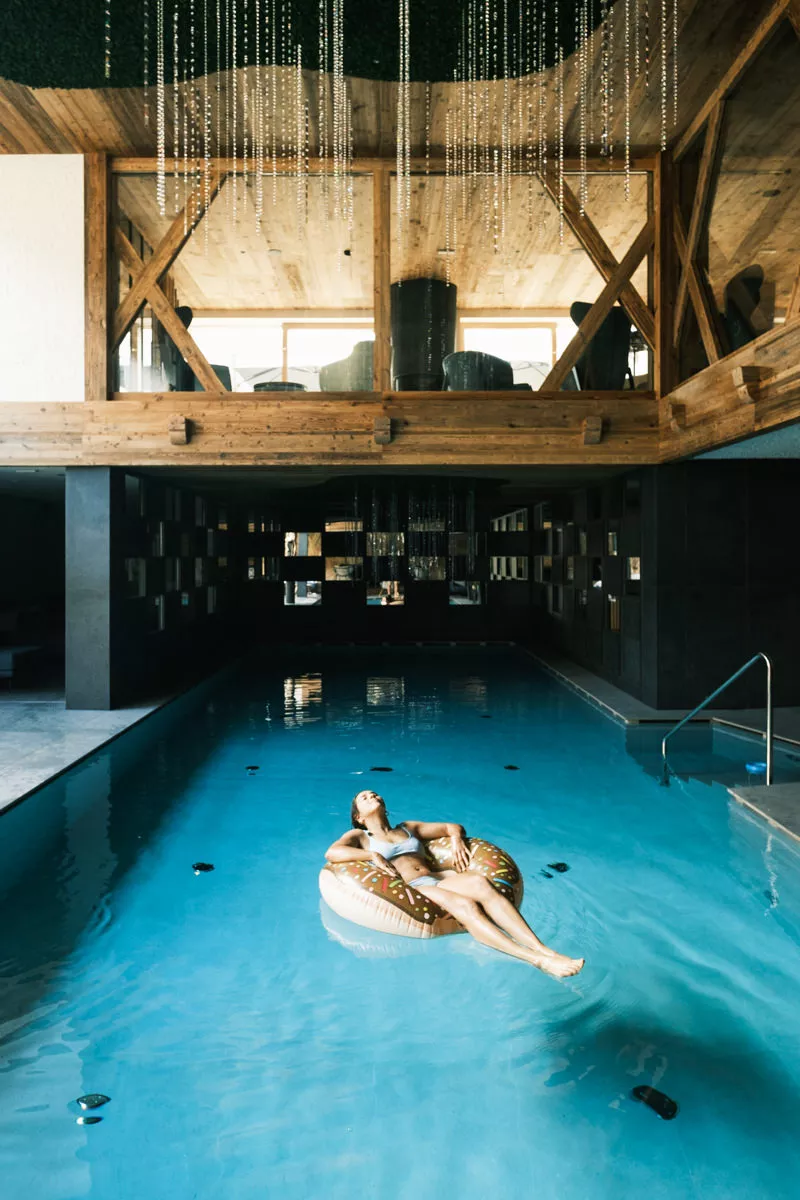
Stay At Hotel Marmolada: Our favorite hotel of the trip. Everything here was delivered, from our room, the balcony and its view, the spa, to its restaurant and service. The place is run by a lovely family and the grandmother was always checking in on us. I wish we could have stayed longer.
How To Choose A Region In The Dolomites
From experience, I’ve learned that that a successful road trip, ironically, should involve as little driving as possible each day. My rule of thumb is 3 hours or less of driving a day except for the arrival and departure days.
For that reason, I recommend choosing one or two regions and staying longer in each location. These were ones we chose. You can see my Google Maps pin below for reference. Note that except for Lago di Braies and Tre Cime (two places we ended up skipping), everything is more or less on a straight line.

Cortina d’Ampezzo
Cortina d’Ampezzo is a very popular starting point if you’re coming in from Venice. The town is about a 2.5 drive from the airport with plenty of restaurants and choices for accommodations. From here, it’s easy enough to drive to Tre Cime, Lago di Braies, and Lago di Sorapis amongst other places. Those popular spots were what brought Cortina to our attention, but after speaking with a local guide, we went his recommendations, which worked out beautifully.
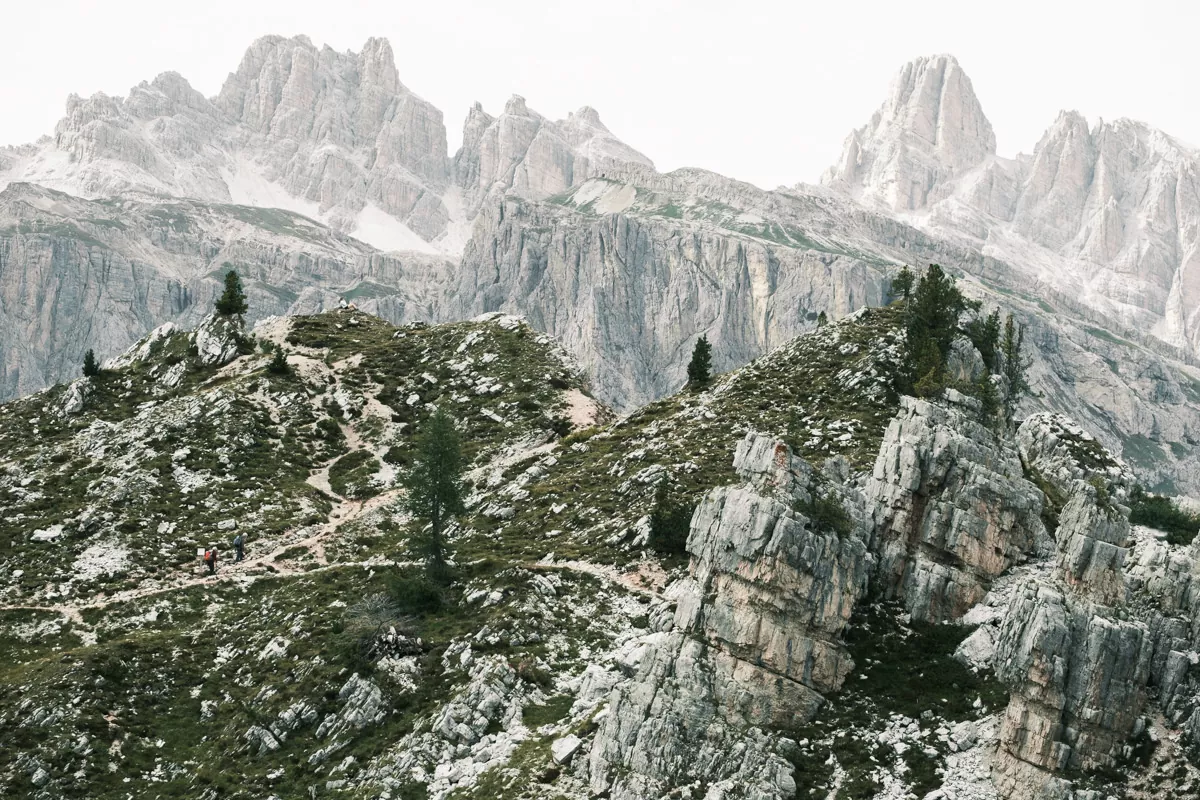
If you are planning a longer visit to the Cortina area, I highly recommend reading my Read First Guide To Cortina and going to the Cortina Tourism website which are both packed with all the information you could ever need to plan your trip from maps, hiking and live webcam feeds to recommendations for activities, restaurants, and accommodations.
Alta Badia
Alta Badia was the next logical stopping point on our trip, an hour west of Cortina and another central location for some beautiful spots that don’t often get featured on social media. There are a few villages to stay in Alta Badia and we chose to stay centrally in Corvara, which had multiple cable car lifts within walking distance from our hotel.
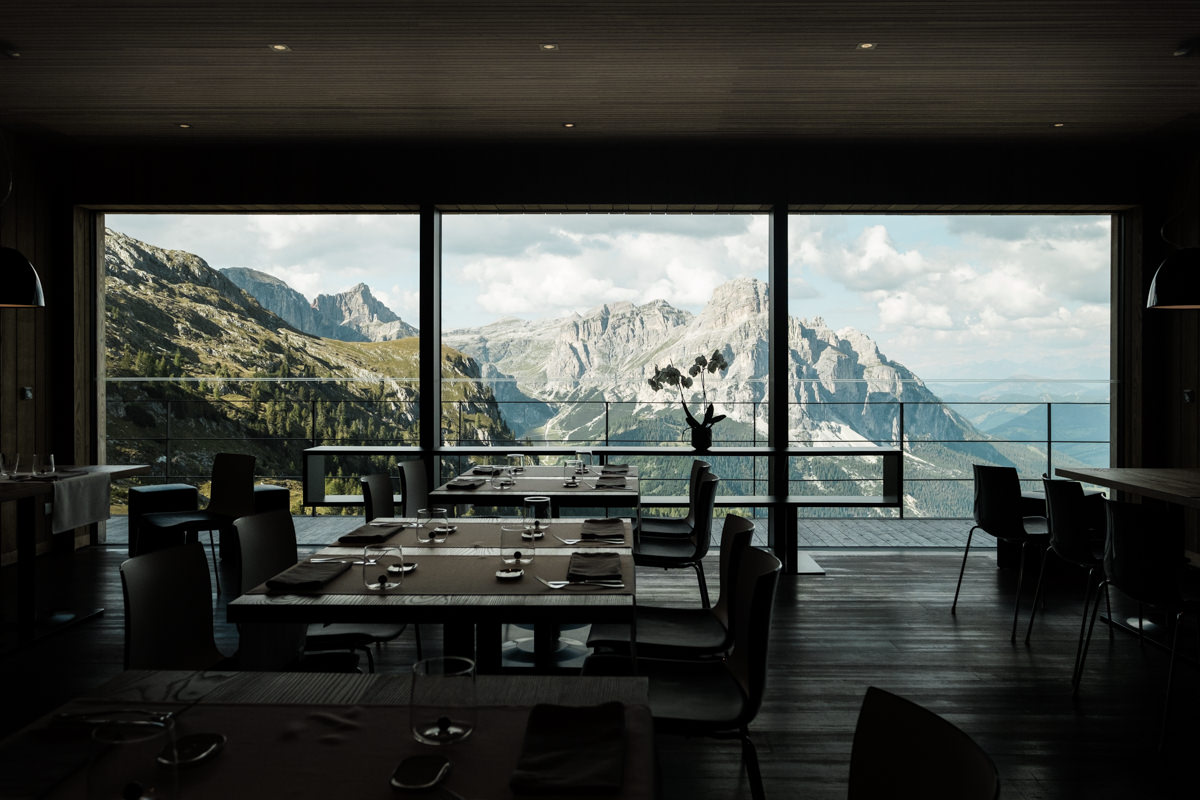
If you are planning a longer visit to the Alta Badia area, the official tourism website is a great resource to get a lot of in-depth and up to date information about activities, trails, and lifts.
Val Gardena
Finally, we continued further west to Val Gardena, which was about a 40 minute drive from Corvara. It was close to the trailhead for our hike to Seceda, one of the highlights of our trip.
From here, it was a 2.5-3 hour drive to Verona and another hour to get back to Marco Polo International Airport in Venice. This loop was roughly 530 km and involves 7.5 hours of total driving, which was easily managed in a week’s time.
The Argument For Staying In The Ladin Valleys
If, like us, you wanted to visit a few different areas, I recommend staying in the “center” of the Dolomites, or the Ladin valleys with villages and towns between Cortina d’Ampezzo and Bolzano. By doing this, you can split your time between a few places along the route and shorten the total driving distance needed to get back to your hotel each night.
For example, by moving to Val Gardena, we were right at the base to Col Raiser where we could directly start our hike to Seceda. If we had stayed in Cortina d’Ampezzo the whole time, it would have been a 3 hour roundtrip over two mountain passes to from our hotel.
You’ll appreciate not having to drive back and forth along the same route multiple times during your visit.
That said, if you are planning on staying in one place, your options are wide-open as every region has more than enough places to hike and ski.
Getting To The Dolomites
The new major airports servicing the Dolomites on the Italian side are Venice Marco Polo International Airport and Milan’s Malpensa Airport. There’s also a smaller airport in Verona. All the options are about 2.5-3 hours drive to the closest “major” town in the Dolomites: Cortina d’Ampezzo on the east side if you’re landing in Venice and Bolzano on the west side if you’re coming from Milan or Verona.
Unless the majority of your trip is a multi-day trek through on something like the Alta Via trail and you don’t need to get to any other towns, I highly recommend visiting the Dolomites by car, which will allow you to get to all your destinations on your own schedule.
How To Get From Venice to Cortina Without A Car
There are buses and trains leaving from Venice to Cortina and Venice Marco Polo International Airport to Cortina. There’s usually a morning, afternoon, and evening option. The bus is the faster option and takes about a little hour 2 hours from the airport and about 3 hours from Venice. It’s also the cheaper option at about 20 euros.
I only recommend this option if you are traveling to Cortina and subsequently to the major spots close by during the high season. If you plan to go from village to village and want to do many different hikes, I recommend having your own transportation.
How To Get From Milan To Bolzano Without A Car
Flixbux runs from Milan to Bolzano several times a day. It takes about 4 hours and costs between 10 to 36 euros depending on the time of day.
From Milan Malpensa Airport to Bolzano, there is only one direct bus a day that leaves at 3:50 pm. It takes between 4.5 hours and costs between 12-18 euros.
I only recommend this option if you plan on staying only in Bolzano and/or traveling around locally by bus during the high season.
Why We Skipped Tre Cime, Lago Di Braies, And The Church At Santa Magdalena
After picking our regions and realizing we had too many activities on our list, Yasmine and I had long debates (even after we’d arrived to the Dolomites) over which spots to take off our initial itinerary. In the end, after getting the same responses from two different guides and the owner of our hotel, she gave in and we eliminated these three popular spots from our itinerary.
From what I could see in the photos, these locations look amazing, but I wondered whether they really were the best spots the Dolomites had to offer.
Choosing Cinque Torri Instead Of Tre Cime di Lavaredo
Both of our guides shared their opinions for those wanting to visit Tre Cime di Lavaredo (Three Peaks, Drei Zinnen) for the day via the drive to Rifugio Auronzo (not to be confused with doing a multi-day trek through the Tre Cime region). I’ll summarize it below from our conversations:
“Avoid going during weekends and high season. Go in June, September, or October. Lines for the toll road start well before opening times. We’ve arrived at the start of the roll before 7 am and have often had to wait more than an hour. If a client really wants to go, we’ll try to go off-peak and arrive even earlier. Tre Cime is beautiful, but there are many beautiful mountains in the Dolomites with more exciting and breathtaking hikes that does not require a 30 euro toll and a long wait to reach the parking lot.”
Instead, we went to Cinque Torri where there’s a beautiful hike up to a mountain top Rifugio with an expansive view of the valley below. It was also a great spot if you’re into climbing.
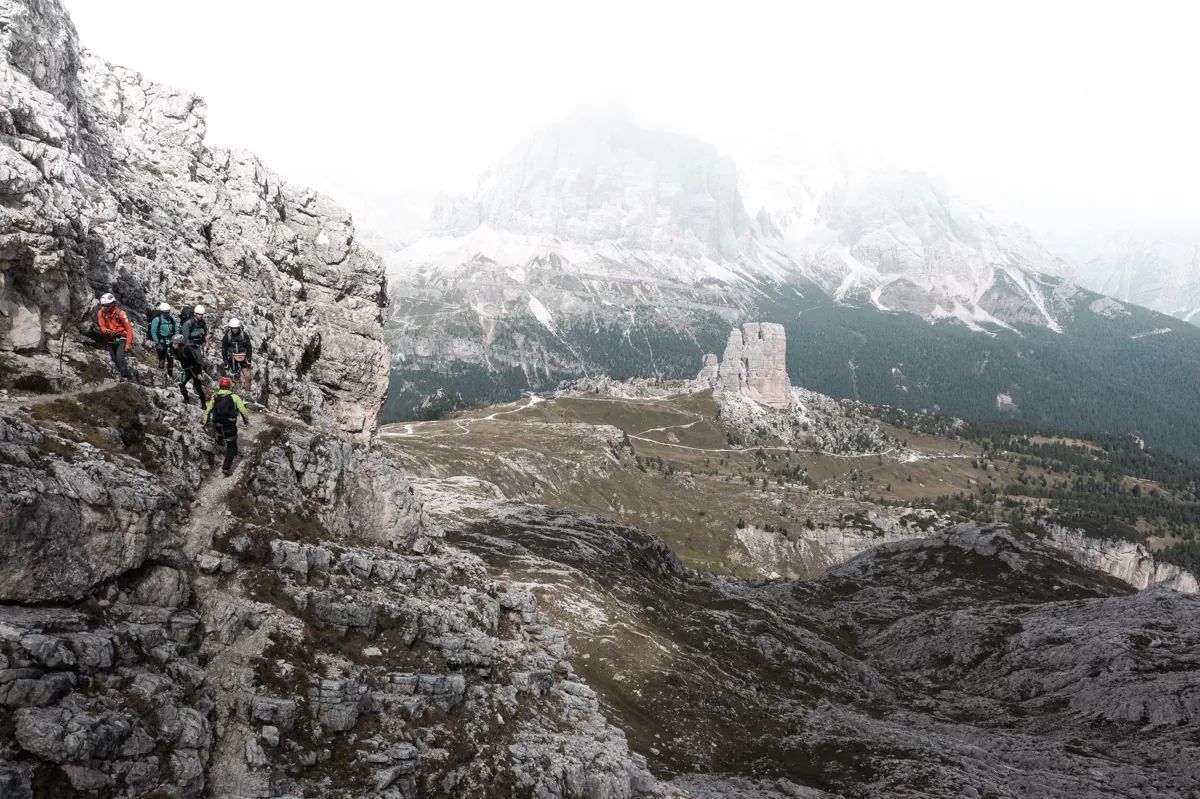
Hiking Lago di Sorapis instead of Lago di Braies
Like Tre Cime, Lago di Braies was another “gem of the Dolomites” spot that we initially on our list. Our only hesitation was that it was about an hour’s drive from Cortina each way. To avoid the crowd, we’d have to get their at dawn and start even earlier.
Here’s a summary of what our guides had to say:
“Lago di Braies is a beautiful lake with the mountains in the back, but it is just so popular now because of Instagram. It’s already full even in the early morning. Some of our guests have started at 4:30 am in the morning to avoid the crowd, but it would get crowded anyway just a short while later. There’s always a line of photographs trying to get the same photographs from the same vantage point.”
Instead, we went to Lago di Sorapis. While this was also a popular spot, the trailhead was right next to our hotel and only a 10 minute drive from Cortina. We were able to start at a more manageable 6 am. We hiked the entire way without meeting anyone and there were only a few people there ahead of us.
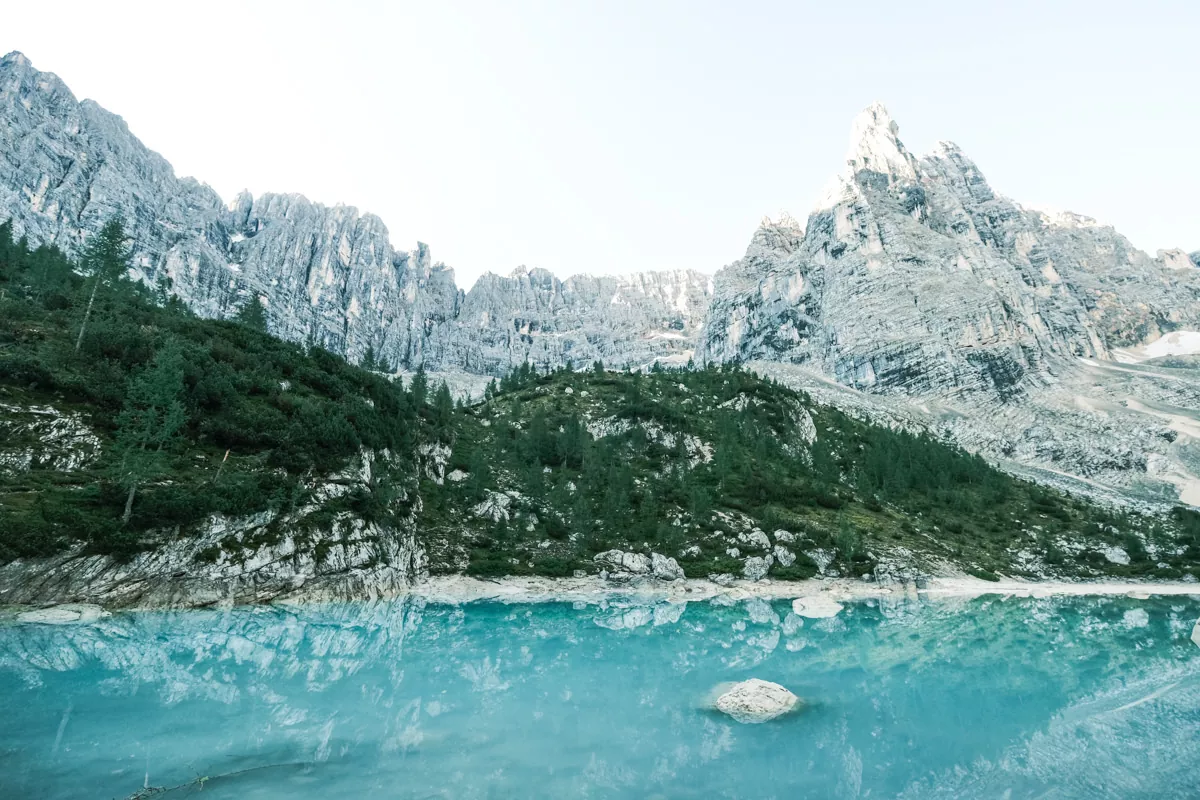
Skipping The Long Drive To The Church At Santa Magdalena
Another spot made popular by Instagram, this was really high on my friends list, but very low on mine. If I happened to be in Santa Madalena, I would have no complaints about seeing this scene, but I certainly found no reason to go drive a few hours out of my way just for a photograph.
The owner of Hotel Marmolada in Corvara gave us a friendly eye roll when I asked about it for my friend.
“I have no idea why it’s so popular. A few years ago, some photos of the church was on Instagram and now I have guests coming all the way from Japan just to see this and Tre Cime. You can find something like this in so many places around the Dolomites, but everyone just wants the same photo.”
From Corvara, it was a 1.5 hour drive each way. And he was right, I spotted a few similar scenes like it, on our various hikes, of a singular cabin or church surrounded by the engulfing landscapes.
How We Chose Our Hikes
One of the things I really wanted to check off my list in the Dolomites was Via Ferrata, a method of traversing a more difficult path clipped to a climbing harness. Since neither me nor Yasmine had done it before, we decided to get a guide in each different locations and let them make recommendation.
Via Ferrata In The Dolomites
In Cortina, we went with Luca from Guide Alpine Cortina Dolomiti. The guides are local and know the area better than anyone else.
In Alta Badia, we went with Francesco from Alta Badia Guides. Francesco came highly recommended to us from the people at the Alta Badia tourism board. We could see why, as not only was he born in the region and has been doing this for a long time, he is also a professional photographer who leads clients on some hardcore adventures around the world.
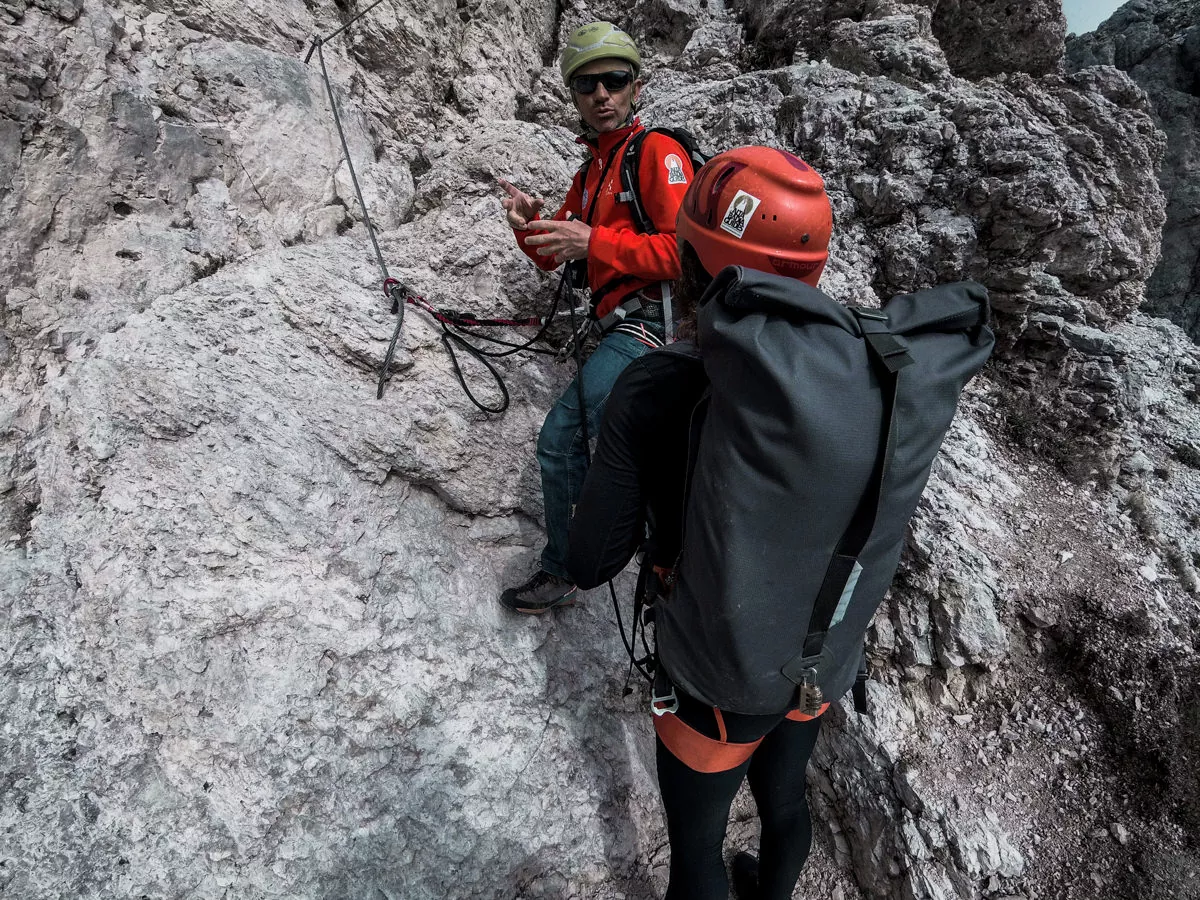
Forget About Finding The “Best” Hikes In The Dolomites
I couldn’t resist asking them a question that I knew would not have a simple answer: what are the best hikes in the Dolomites?
As I expected from seasoned locals, what they valued in a hike was different from what a visitor might value. Places that drew the most visitors were spots that they avoided. Not because they weren’t beautiful, but because they weren’t worth giving up the peace and quiet you’re going out to nature to find.
What’s better than having nature to yourself?
Ultimately, choose a hike you will enjoy. If you are don’t like to climb, a challenging hike may not be worth it just for the view at the top. If you want to walk in a forest with soft dirt under your feet, a hyped up hike on slippery gravel probably won’t make you happy.
Asking Friends Who Have Visited The Dolomites
I also reached out to friends who had gone to the Dolomites for years and they came back with a couple of hikes that were must-do, like the Seceda hike.
Everyone had the same advice: don’t overstuff your itinerary. As tempting as it is to do multiple hikes a day everyday, the logistics and time crunch will take away from the experience for a lot of people.
You will want to have time to rest, recover at the hotel spa, and actually take your time on the trail. There are rifugios in many places where you can sit, have a meal or drink, and just take in the surroundings. You will want to allot time for this.
Should You Get The Dolomiti Supersummer Pass
Lifts, gondolas, and cable cars, when available, are a practical way to skip the initiate ascent, which usually just go along the same path beneath the cable line.
But this shortcut doesn’t come cheap. Tickets can range between 10-30 euros one way. Depending on how many hikes you plan to do or how many viewpoints you want to get to, this can add up quickly. This is where getting a lift pass can come in handle.
During the summer season, the Dolomiti Supersummer card is available giving you access to every lift in the Dolomite. I believe there’s something like 118 lifts across the 12 regions. There are two options: The Supersummer card (bike transport included) and the Points Value Card.
Dolomiti Points Value Card
With the points system, you can purchase a card with 800 units for 80 euros or 1400 units for 140 euros. 10 units is equal to 1 euro. By effectively pre-purchasing the cost of your lifts, you save 20% on ascents and 35% on descents. In generally, if you’re going to use about 5-7 lifts for ascents, this is probably won’t looking into, if only to calculate whether you’re saving much.
Roundtrip tickets are usually cheaper than purchasing one-way tickets, so the cost savings is not as big if you’re going up and down every mountain using the lift.
Dolomiti Supersummer Card
The Supersummer card is for those who want to use as many lifts as they desire without worrying about the cost.
Day Ticket 47 Euros
Depending on the lifts, you might break even after 2-3 roundtrip lifts in a day. In my opinion, that’s a lot of lift usage unless you’re just going to the top for a short hike and coming right back down using the lift.
3 Out Of 4 Day Ticket 110 Euros
This is good option if you plan on using the lift passes on days where you are using a lot of lifts and buying individual tickets on days where you might only use one. The downside is that these heavy lift usage days need to be within a 4 day window.
5 Out Of 7 Day Ticket 147 Euros
This is obviously the best option if you’re spending a week in the Dolomites and planning to use a lot of lifts. It works across every region and will allow you to use lifts for any 5 days out of the week. That comes out to roughly 30 euros a day. For example, the Col Raiser lift from Val Gardena to start the hike to Seceda costs cost 16 euros uphill and 23 euros for the roundtrip ticket.
Shorter lifts cost less than that example, but our 3 lifts to get to the top of Tofana di Mezzo would have cost nearly 30 euros one way and almost 40 euros roundtrip.
Every region also has their own lift pass which can be purchased with similar options. They are only slight cheaper and would obviously be a good option if you want to get a pass, but you don’t plan on moving across multiple regions.
Is The Dolomiti Supersummer Card Worth It?
You obviously can do the math ahead of time to see if which is the best value. The way I look at it is if you are planning to one one big hike a day, just buy the individual lift ticket that you need.
If you are planning to hit up a lot of small hikes or just to get to some higher altitude viewing points and don’t want to hike back down, consider one of the passes to save a bit of money.
How We Chose Our Accommodations
Manage your expectations. The Dolomites are not cheap, where accommodations in major towns costing $200-$500 a night. But don’t worry, you find sub-$100 rooms if you look at some of the lesser-known towns that are still within distance to most places of interest. See my recommendations below.
These prices will vary based on the season, so you can expect it to be a little lower during the off season and a little higher during peak months and busy weekends. Fortunately, most hotels include at least breakfast.
How To Find Cheap Accommodations In The Dolomites
Are There Hostels in the Dolomites?
As far as I know, there are no traditional hostel options in the Dolomites…but there are rifugios and there are some hotels that offer shared rooms.
Staying In Mountain Rifugios
If you are visiting in the warmer months, staying in a rifugio is a great way to sleep in the mountains and on a budget. Rifugios are cabins in the mountains that offer rooms, beds, and meals for travelers in the mountain. While some rifugios are open during the winter months, many are not because they are not easily reachable in the snow.
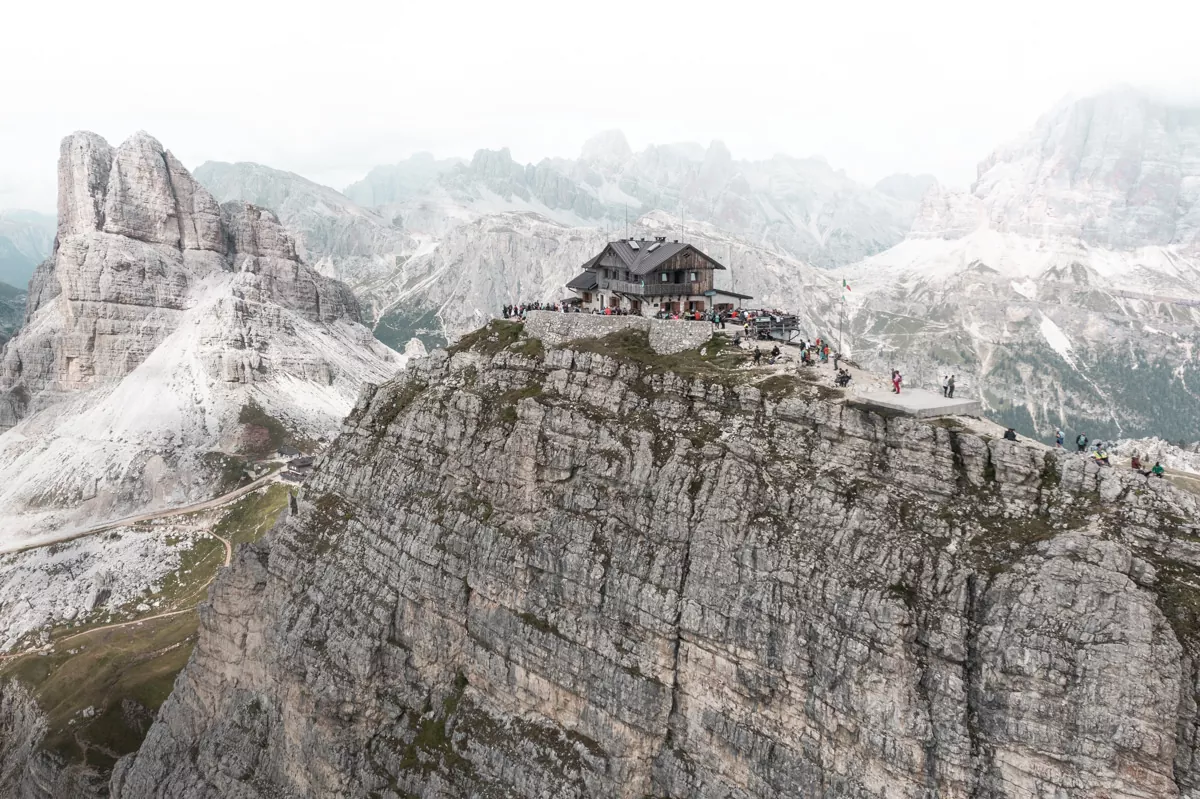
There’s also a period between the end of the summer season and the beginning of the winter season (October, November, April, May) when a lot of places are just closed.
If you happen to come at time when it’s open and are willing to hike into the mountains to sleep, Refugios can be as cheap as 50 euros per person per night and include half board (breakfast or dinner).
The cheapest option is to join one of the Italian Dolomites Alpine Clubs, if you don’t already belong to one in your own country, and stay in one of the Alpine Club rifugios. Members get a discount, sometimes up to 50% off.
On the budget end, expect a bed in a dormitory style room. There are private room options as well.
Cheap Hotel Options In The Dolomites
I ran a filtered search for the cheapest hotels with a 8+ rating and costing between $60 and $150 in the Dolomites. Many results came up, but most were located in regions farther away from where we were planning to visit. Luckily, we were able to find a few. Below are our list of recommended hotels we compiled for our our own search.
Cheap Hotels Near Cortina D’Ampezzo
B&B Hotel Passo Tre Croci Cortina. Away from the center, but right at the trailhead for Lago di Sorapis. We ended up going with this one.
Nord Hotel. Family run hotel with a rustic feel and includes breakfast.
Ciasa Vervei. About a 15 minute drive from Cortina, we passed this cute little spot. and the rooms looked nice.
Hotel Albergo Dolomiti was a bit further away, but still a reasonable driving distance from Cortina d’Ampezzo and Lago di Sorapis. A bit dated looking, but one of the lowest prices we found in the area.
Cheap Hotels Near Corvara
Berghotel Ladinia. One of the established hotels in Corvara. Rooms look cozy and clean. We had a drink here and the view behind the hotel is amazing.
Pension Mirandola. Located right next door in Colfosco with alpine-style rooms. A buffet breakfast is included.
Residence Ploner. Located nearby in San Cassiano. Basic room with a bakery and supermarket on the site. Low price for the area.
Hotel Ciasa Ai Pini. Located nearby in San Cassiano. Lowest price in the area with a sauna and Turkish bath and a buffet breakfast included.
Cheap Hotels Near Val Gardena
Selva di Val Gardena and Santa Cristina Gherdeina had the lowest prices of the towns we were planning to stay in. It’s between Corvara and Ortisei, so it’s a great alternative for those places.
Hotel Acadia. Located 10 minutes drive from Ortisei. A modern alpine-style hotel with beautiful rooms and a buffet breakfast.
Hotel Cir. Popular spot on the Gardena pass. Room are rustic and clean looking. One of the lowest prices in the area.
Hotel Garni Morene. Family run spot popular in the wintertime for skiing. Beautiful views and breakfast buffet.
Villa Insam. Quaint and cute lodge.
Monte Pana Dolomites Hotel. Gorgeous 115 year old hotel with a beautiful indoor pool and sauna. Breakfast included. We nearly booked this property.
Smart Hotel Saslong. In Santa Cristina Gherdeina. Located run next to the bus stop that runs through the area. Minimalist and modern style.
Where We Stayed On Our Road Trip
I knew going in that I wanted to have a spa at the hotel – a place to warm up in the cold evenings and soak our tired legs.
We filtered our hotel search to include a spa and there are no shortage of options. There were a lot of hotels that I was salivating over, I also didn’t want to spend $200 per person per night every night of the week.
So, our plan was to find accommodation on the lower end for the first couple of nights and then splurge on something for the middle and end of the trip.

B&B Hotel Passo Tre Croci Cortina, Cortina
In Cortina d’Ampezzo, our first destination for two nights, we stayed at the B&B Hotel Passo Tre Croci Cortina. It was about 100 euros for 2 people with breakfast included.
The hotel is a manageable 13 minute drive from the Cortina d’Ampezzo center and the room was nice and spacious. The best part was the location right by the trailhead for Lago di Sorapis, so we only had to walk out of the hotel to start our sunrise hike.

PRO TIP: If you want to eat at your hotel, I highly recommend choosing the half board option, because a typical 3 course meal at a restaurant will cost you more than what the hotels usually charge for their half board dinner option.
Hotel Marmolada, Corvara
In Alta Badia, we splurged and booked a room at the family owned and run Hotel Marmolada right in the heart of Corvara. This hotel had everything we could have asked for. A central location with views of the mountains from our balcony, an amazing indoor pool, spa and relaxation area, and the most tastiest breakfast and dinners every day.
We were so full after each dinner that we decided NOT to book the half board for our next destination – just to take a break from eating.
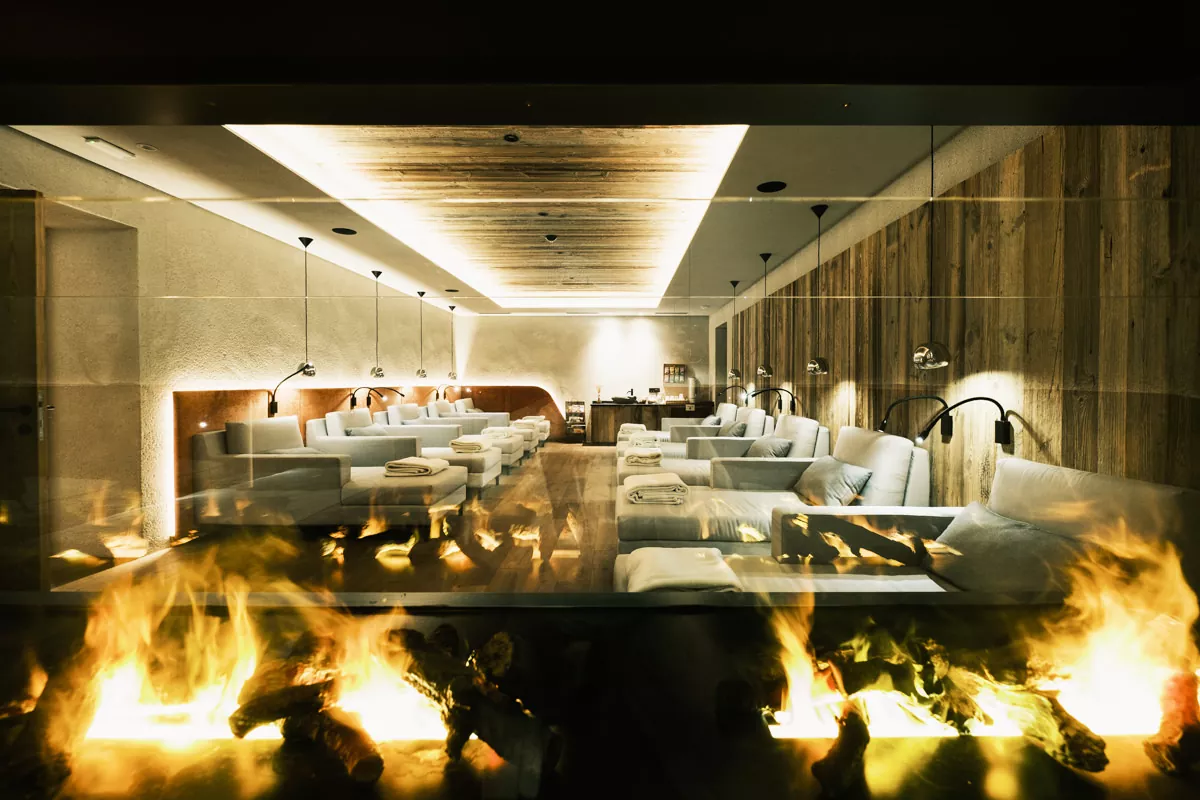
After two full days of hiking and Via Ferrata, we enjoyed every minute in recovering in the spa. I did a full review of the Hotel Marmolada. This place was exactly how I imagined a holiday in the Dolomites.
Hotel Continental, Val Gardena
In Val Gardena, we lowered our budget a bit from the Hotel Marmolada and booked the Hotel Continental. This one cost around $200 a night for the both of us. I would describe it as quaint and sufficient. The spa served its purpose and the breakfast was nice, but following the Hotel Marmolada was a tough act.
Overall, I thought we did pretty well with our choices. I would highly recommend our first two options, the B&B Passo Tre Croci Cortina for its value and the Hotel Marmolada for its everything. I’d pass on the Hotel Continental.
Best Hotels To Stay In The Dolomites
Below is short list of the beautiful hotels recommended to us from the people we met during the trip as well as other trip reports we reviewed. These were the places we wanted to splurge on, but we had to choose only one, and that was the Hotel Marmolada in Corvara. I’ve saved these for next time, but that shouldn’t stop you having a look.
Best Hotels In Cortina D’Ampezzo
Best Hotels In Corvara
Kolfuschgerhof Mountain Resort
Best Hotels in Selva di Val Gardena
When Is The Best Time Of Year To Visit The Dolomites
Winter Season in the Dolomites
There’s two major season to go to the Dolomites: Summer and Winter. In the winter from December to March, it’s all about skiing and snowboarding. In the summer, people come to hike, climb, and mountain bike. Though the seasons don’t limit themselves to just these activities. The Dolomites are also a place to just relax and you can see that in the high quality of accommodations available, most with their own spa and restaurants offer full board and half board meal options.
As soon as there is snow, the lifts and slopes are open and welcome an equal amount of visitors each month in the winter time.
Summer Season in the Dolomites
July and August are the peak months for summer visitors as that’s when most families have their collective summer holidays.
During the summer season, June, September and October are the best times to visit as it’s less crowded, while still having great weather. Though note that October does mark does end of the summer season and some places will have started to close for a short period ahead of the winter season. It’s slightly cooler in September and October, so in a way, the hikes are a little easier without the heat. Accommodations are easier to find and the prices are generally a little lower as well. Best of all, is that you’ll avoid the bulk overcrowded hikes during these months.
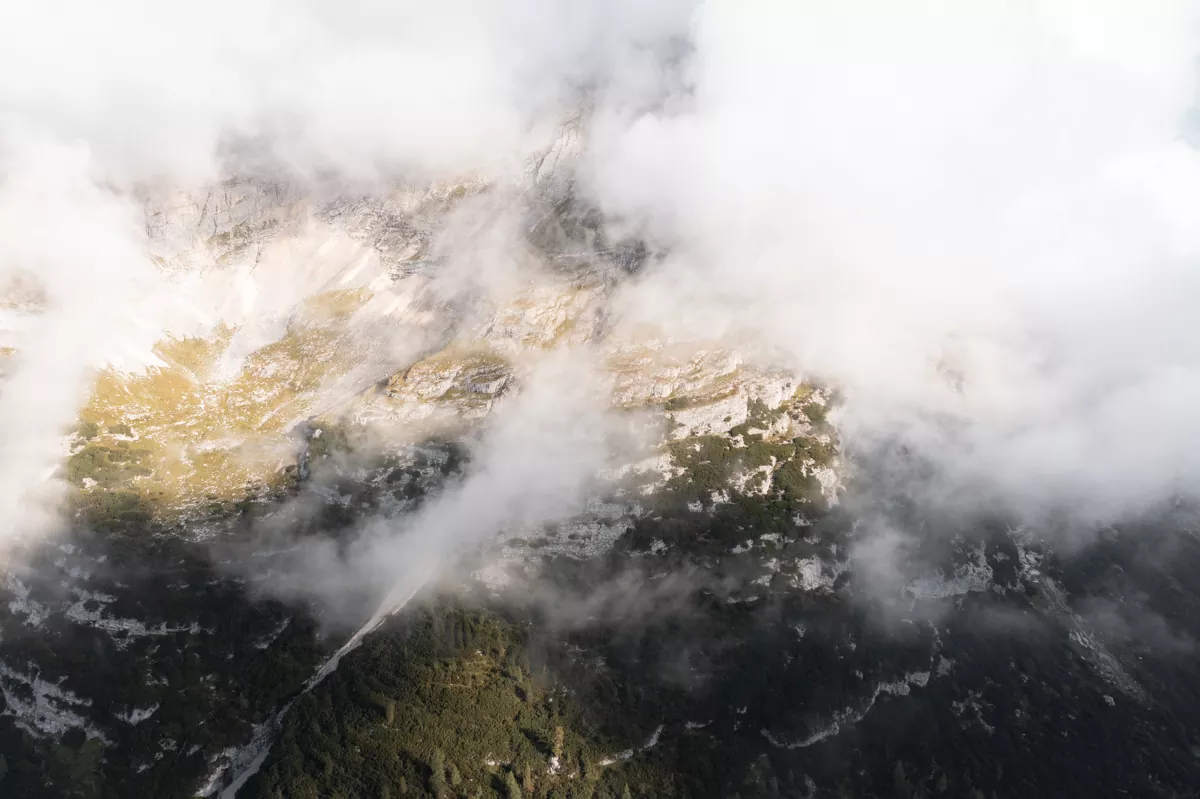
You can visit during the springtime months of April and May, but there will still be snow in the mountains, so a lot of passes might be still closed. In fact, the skiing season doesn’t end until end of April.
We visited in early September and found it extremely enjoyable. There were still crowds, to be clear, in popular spots like Lake Sorapis, but we had the place almost all to ourselves by skipping breakfast and heading out at 6 am. On our way down, there was a trail of people (presumably with fuller stomachs than ours) going up. Still, I couldn’t imagine the type of crowds during the peak seasons to places like Lago di Braies and Tre Cime di Lavaredo.
What Languages Are Spoken In The Dolomites?
Italian, German and Ladin (and English). I won’t do a deep dive into the history of how this came about, but in short, the Dolomites were once part of the Austro-Hungarian empire until the early 20th century. During World War I, some of the deadliest battles were fought here.
Italian is the official language, but many parts are also German speaking. You’ll find both Italian and Austrian names for most of the mountains and valleys.
Ladin is the oldest language in the region and spoken by the first people in the valleys of the Dolomites. It is still spoken today in the 5 Ladin valleys: Cortina d’Ampezzo, Val Gardena, Alta Badia, Fodom and Val di Fassa. This is where we spent our time.
English is spoken by almost everyone who works in the tourism industry, so if you don’t speak any of the other three languages, rest assure that you can get by easily with English.
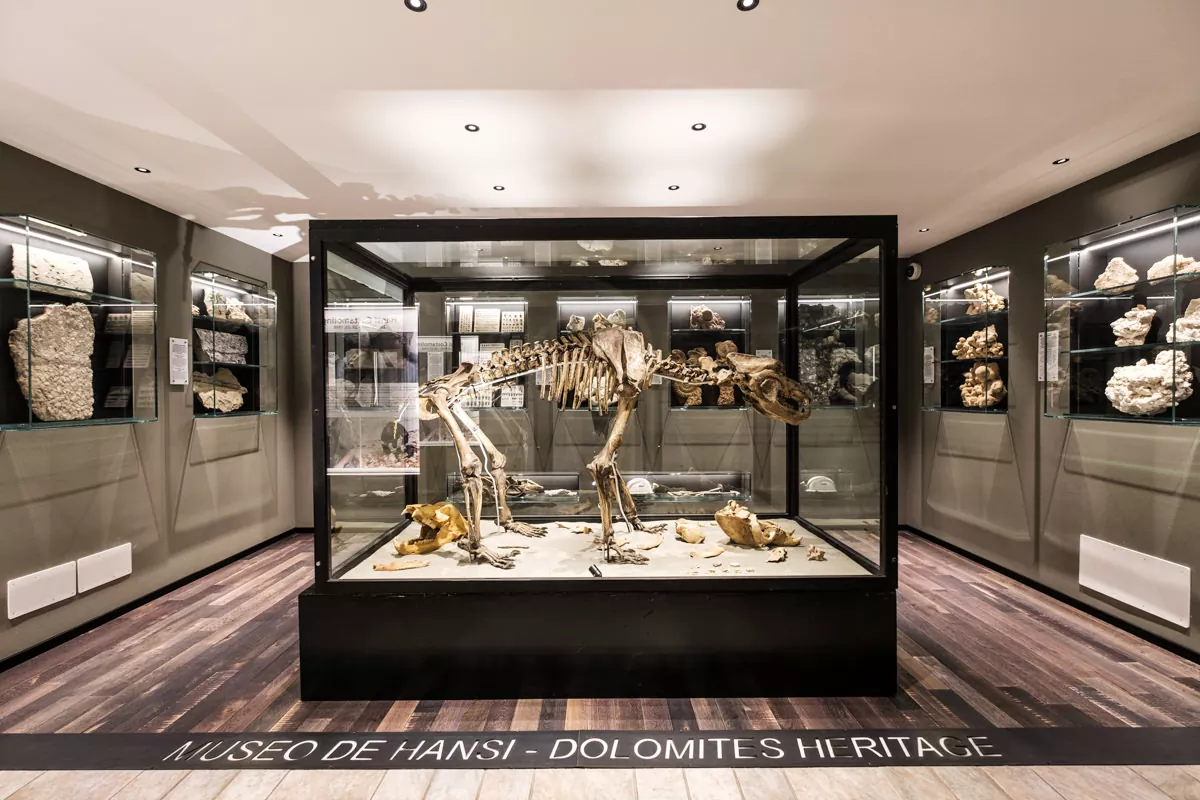
How To Pack For The Dolomites
This is an important section to read and double check before you make your trip there. Winter is easy. Pack warm. Bring your gear. Spring, summer and fall is not as straightforward as you might think.
In the Dolomites, you deal with valleys and mountains where temperatures can change dramatically from hour to hour. When the sun’s out, the valleys can be quite warm, but as soon as it drops behind the mountains, it can get cold quickly.
My advice summed up: layer and expect rain. But here’s a more comprehensive list of essentials without all the specialized gear like climbing equipment or mountain bikes, etc.
Waterproof Boots or Trail Running/Approach Shoes
You want something with sturdy traction as the hiking terrain can change from dirt and mud to grass and gravel. Waterproof boots are great for hiking, but trail running or approach shoes are even better if you’re doing something like a Via Ferrata where a bit more flexibility is welcomed. This hybrid between a climbing shoe and a hiking shoe gives you the best of both words.
Merino Layer
Whether it’s a pair of leggings or an undershirt, merino wool is one of the best layering material out there because it’s light, warm, breathable, temperature regulating, odor-resistant and moisture wicking. Every single one of those qualities will be appreciated in the early mornings or late afternoons when you’re on the trail or high up on a mountain top rifugio.
Cloud Sandals
I used to do ultra endurance races where I was on my feet for several marathons worth of miles through the gnarliest terrain. And that’s where I learned about these “cloud” sandals. Not only are they perfect for the spa after a long day’s hike, but they are just super comfortable for your feet after long hikes.
Ultra-light Down Jacket
The one thing I carry on every trip is my Ghost Whisperer down jacket. It’s one of the lightest jackets on the market, packs into itself down to nothing so I can toss it in any bag, and has kept me warm in below freezing weather. The 800-fill goose down jacket, like most other goose down, does not hold up when it’s wet though, so when it rains, I reach for the next item on the list.
Rain Shell
Rather than opt for a bulky jacket that’s waterproof, I prefer to have a light waterproof rain shell that goes over my other layers. Combined with my lightweight down jacket, and a merino base layer, but I’ve been warm in Iceland during the winter.
Day Pack
If you’re not doing a multi-day trek, any light day pack will do, but if you plan on doing any kind of Via Ferrata climbing, opt for something low-profile with a waist strap just so you can keep it firm on your back and out of the way.
Insulated Water Bottle
If you like your water cold or warm, bring a good insulated water bottle. I also have a thermos with a built in cup for for tea and coffee that I always taking camping.
Collapsible Water Bottle
I carry this collapsible water bottle with me everywhere. It’s great for traveling because it weighs 1.5 ounces and rolls away to nothing when it’s empty. Get the 1L version.
Portable Massager
So this is not really an essential, but I kept wishing I had my Theragun Mini with me while I was in the Dolomites. It is incredibly powerful for something so compact and would have come in handy after our long hikes.
Take You Time And Your Trip
Last words of advice. Give yourself time. Don’t overpack your days so you aren’t rushing to get from one hike to the next. The Dolomites are one of those places where it’s not about one view or a destination, its beauty is everywhere, so you’ll want to stop more than you think to take in the view or a photo. For more adventures and ideas, check out the hundreds of items on my ultimate Bucket List.
If you’re looking for more travel inspirations, scroll through some of the 450+ experiences on my bucket list. Maybe you’ll find your next adventure on there.
How You Can Help
When you make a purchase using these links, you’ll help support this site at no cost to you.
| Booking.com | Agoda.com |
| Amazon.com | Klook.com |
| Viator.com | GetYourGuide.com |
Updated on July 3, 2024


